Hello everyone!
Every time I go to Belgrade, I like to stop by the Kalemegdan Fortress. Before entering the fortress, there is a beautiful gallery of war equipment, allright... it is more frightening than beautiful. But, here, we will speak it is interesting, because that is what you first see before entering the fortress, all of these equipment looks like it will fire every moment.
I went from a tank to a tank, from cannon to cannon, like a little child, I tried everything and I tried to shoot :D
###
S-125 "NEVA"
In front of the walls of the Kalemegdan Fortress, among tanks, cannons and other witnesses of military epoch, standing one unusual exhibit, it is a rocket system S-125 "Neva". At first look, it seems cold, mechanically, industrial, and you are probably. But this rocket wears more than steel and fuel in them. She carries a story about David against Goliaths, on technological resistance and tactical compressibility at a time when the world was looking towards the Balkans.
S-125 "Neva" is a Soviet missile PVO air-conditioned mid-range defense system, developed in the 1950s. It is intended for felling enemy planes in small and medium-sized heights, where previous systems such as S-75 were not effective. The system uses 5V24 rockets and was part of the standard equipment of many members of the Warsaw Pact.

Although at the time of NATO bombing the FRY in 1999. This system was already technologically obsolete, Serbian counter-air defense has made this rocket entry into the legend.
The most famous moment was recorded on March 27, 1999. year, when the US F-117 Nighthawk, also known as the "invisible plane" was recorded using the S-125 system. It was the first and only time in history that this type of aircraft was down, this was an event that shocked the world.
Colonel Zoltán Dani, which, with the use of radar tricks, short-to-date and constant change of position, was stood for the commander of the rocket battery, which, with the use of radar tricks, managed to catch an invisible airplane.
### Technical characteristics
- Name: S-125 "Neva" (NATO mark: SA-3 GOA)
- Production: SSSR
- Purpose: PVO - Fighting a plane on small and medium-sized heights
- Rocket Rats: Up to 35 km
- Effective height: up to 18 km
- Rockets: 5V24 with radar indication
The rocket that is located today in front of the Military Museum in Belgrade, with its white and green colored body, is not just weapons. It is a symbol of one time, fighting for survival, engineering resource. In addition to her, tourists and locals pass every day, often unconscious that they are just looking at one of the most famous symbols of resistance in modern military history.

###
Artillery
While walking on the paved paths in front of the Military Museum, along the walls of Kalemegdan, the views inevitably pause on impressive pipes and hard wheels of artillery tools. Silence around them is deep today, but sometimes there was a noise from these pipes that changed history.
The artillery exposed in front of the fortress comes from different epochs, from Austrian and Turkish cannons from 18. and 19. century, all the way to modern artillery cannons and anti-tank tools used in the WW1 and WW2. These tools are not just weapons, they are witnesses of epoch, in which the armies defended the cities, occupied the hills, reduplicated boundaries.

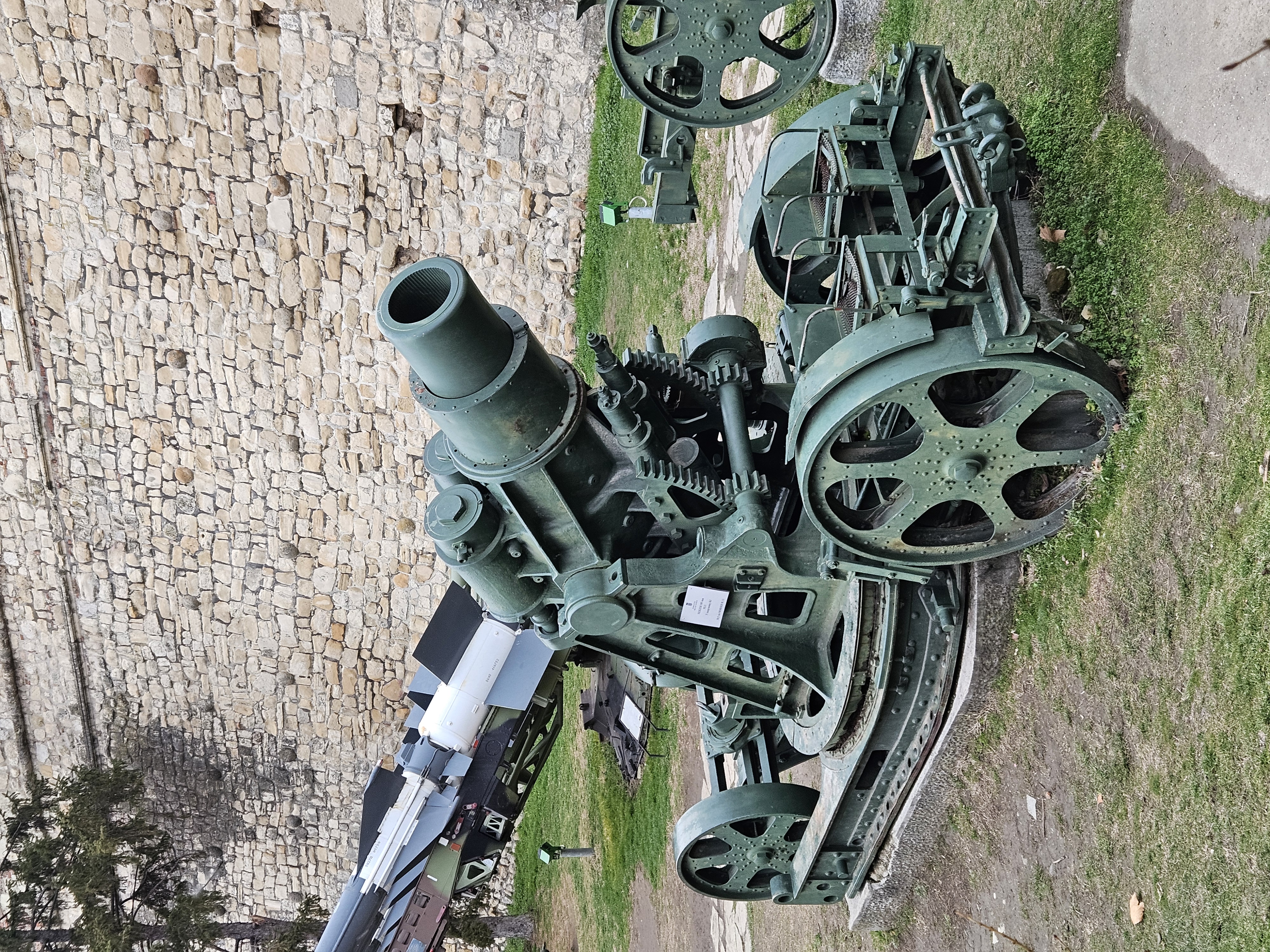
It's not accidental that these cannons stand here. The Kalemegdan Fortress itself was an artillery stronghold from Roman Singidunum to Ottoman and Habsburg Fights, all the way to modern Serbian artillery. The viewed with the ramparts includes the confluence of the Sava in the Danube, a strategic point, which history has spilled with blood repeatedly. The cannons used to protect that view, now they are just monitor him in silence.
### The specimens you will find
The Austro-Hungarian and German Hoods from the WW1, massive, iron and coarse, often with inscriptions and markings testifying about the battles in the Balkans.
- Soviet anti-tank cannons (ZIS-3): weapons used in World War II in later years as part of the Yugoslav Defense.
- Turkish bronze cannons from the 18th century: decorated with oriental inscriptions, they testify to Turkish military aesthetics and technology of that time.
- French Schneider cannons: used in the Balkan wars and later in the First World War by the Serbian Army.
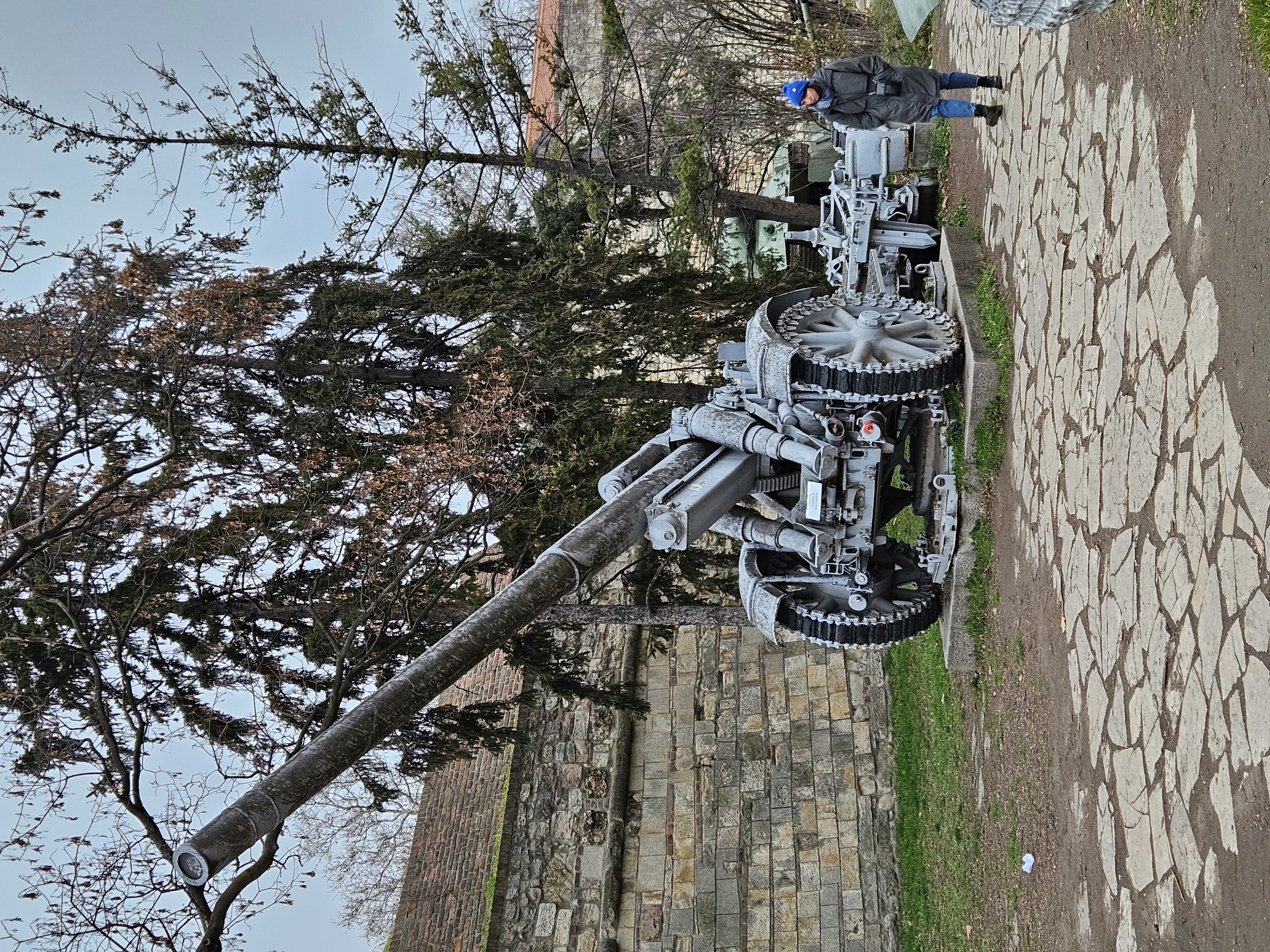
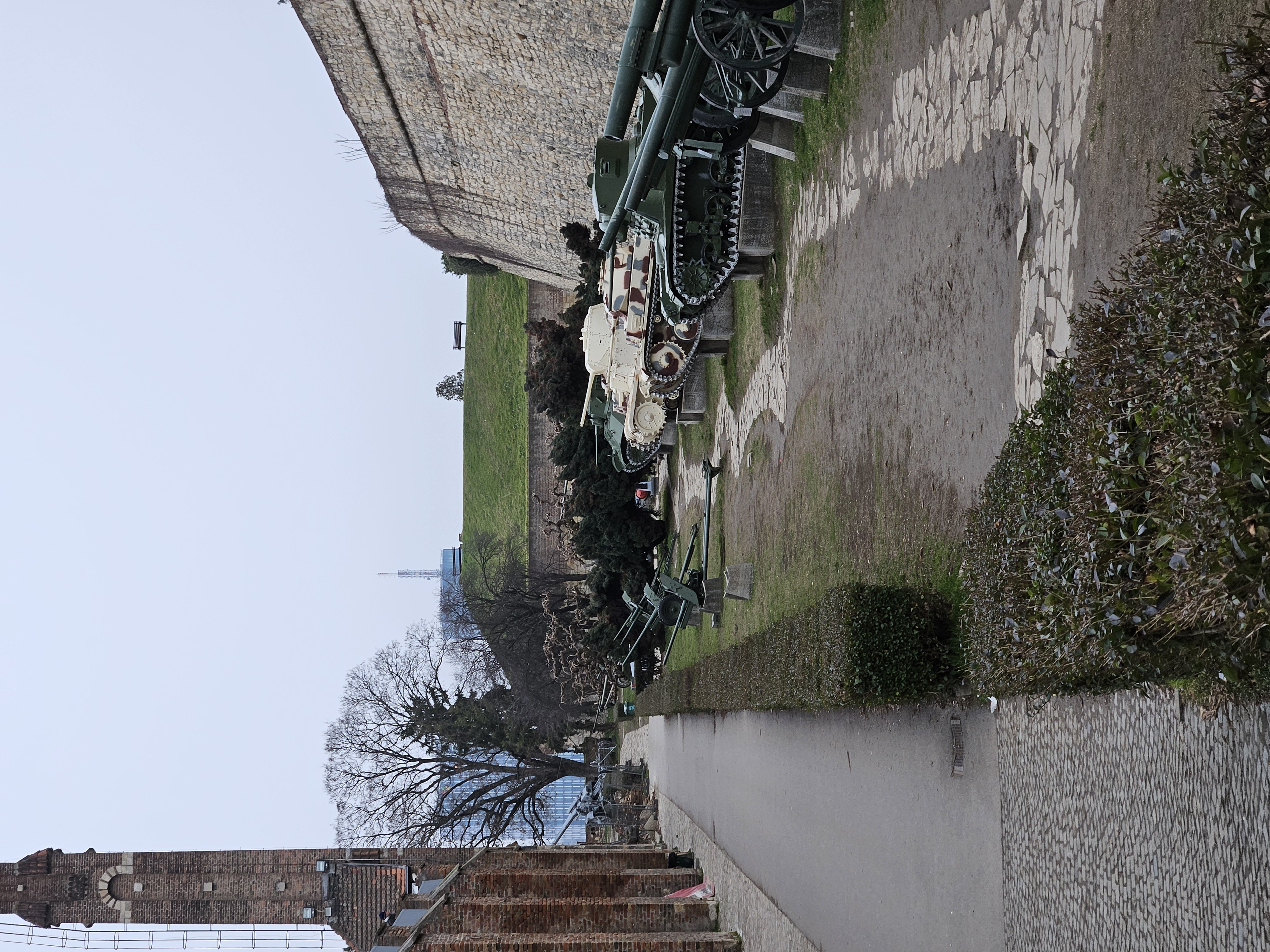
People stood behind each of these cannons. Artillery, soldiers who counted the grains and waited for the fire command. People who ate near these tools, slept with them, often died without leaving a name. Today, their efforts and victims do not live in the lists of celebrities, but in these heavy, rusty pipes we look.

Although there is no fire today, no smoke, artillery on Kalemegdan still shoots history, courage and loyalty. What did it look like to be an artillery in the trenches of Thessaloniki Front? How did the first platoon sound in Belgrade's defense? How did cannons with Kalemegdan changed the world?
We won't get the answer on those questions, but as you walk between them, you may feel something of that quiet, Iron story, not about war, but about the time that we know everything we know today.
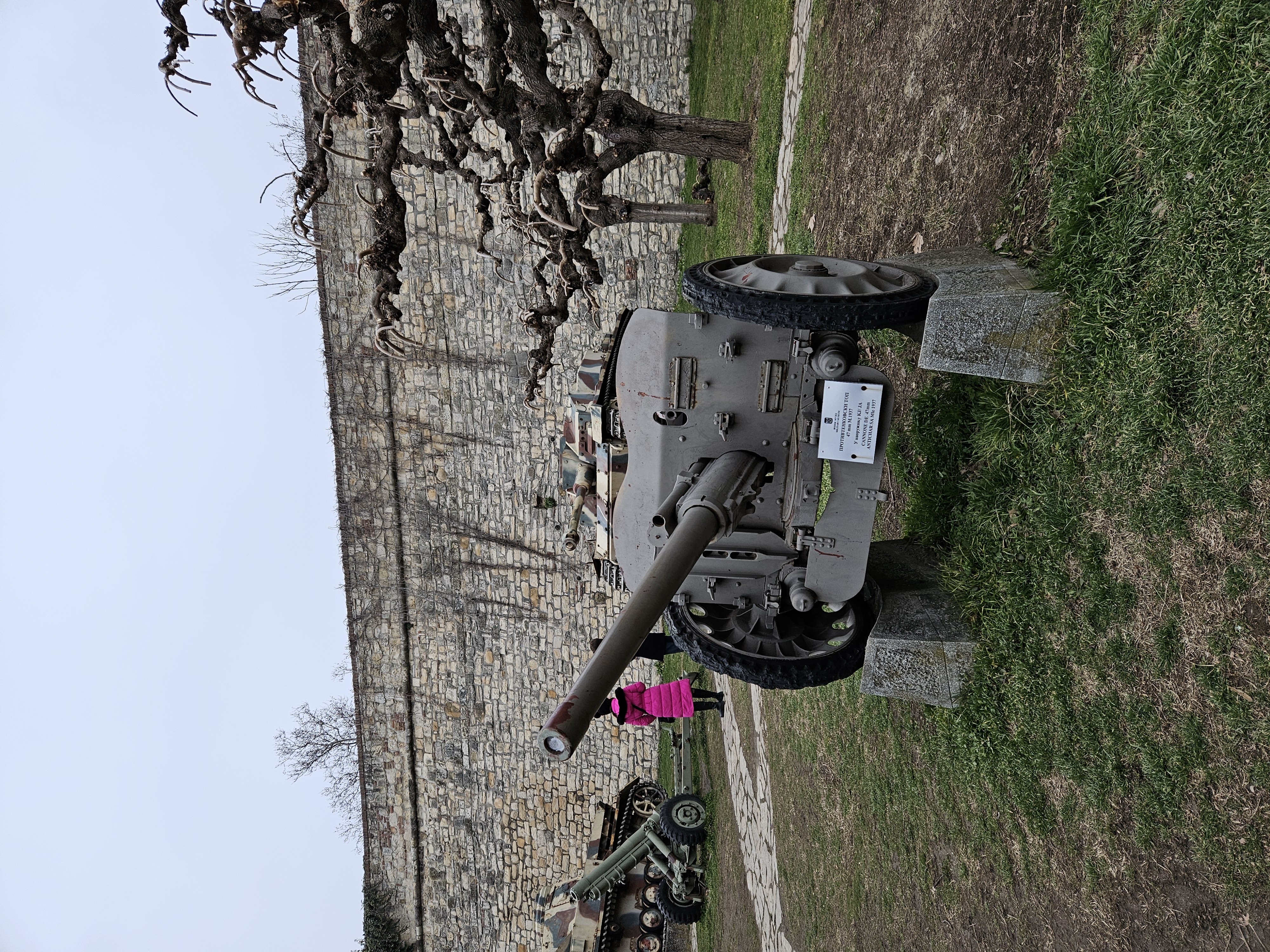
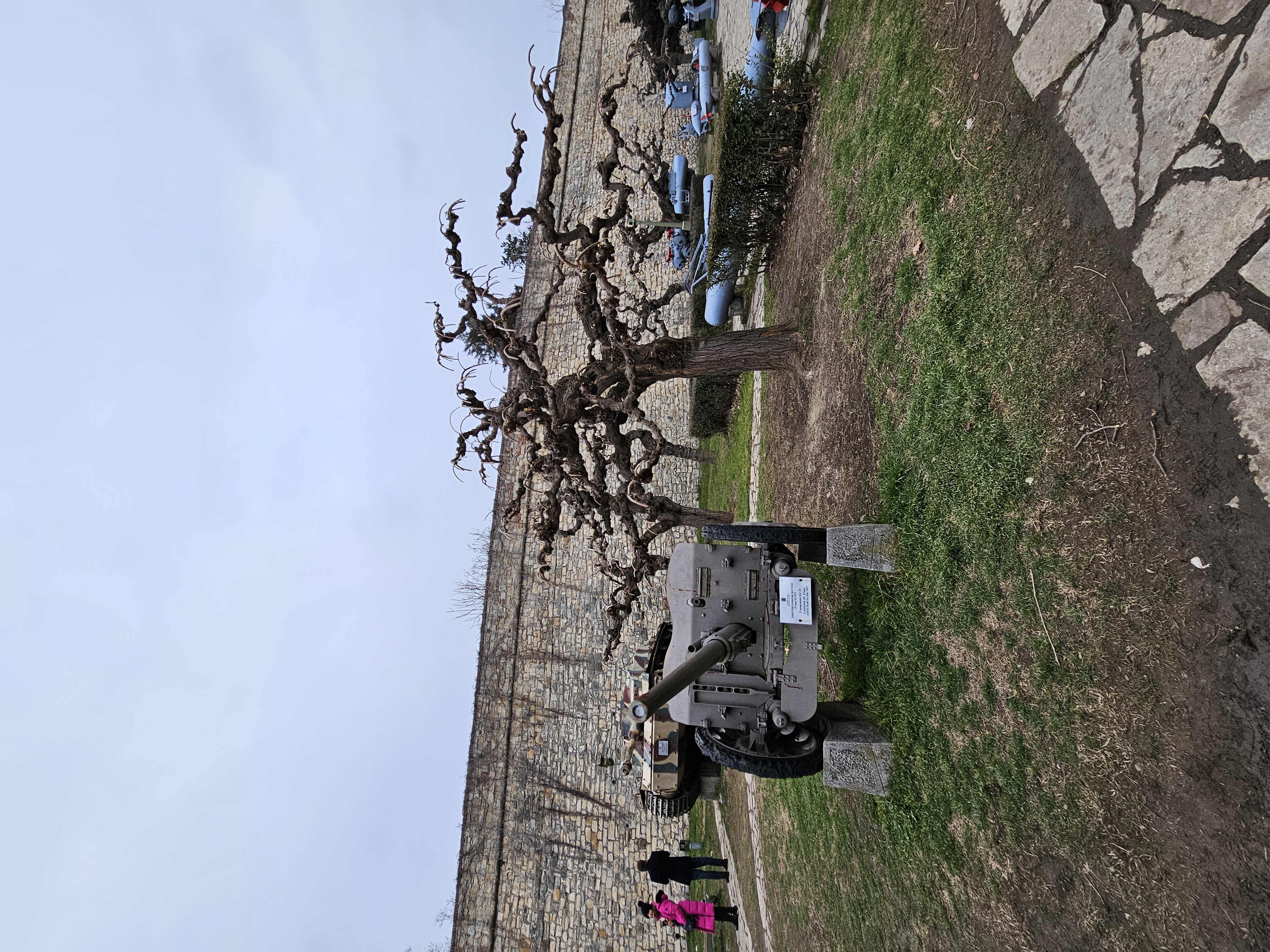
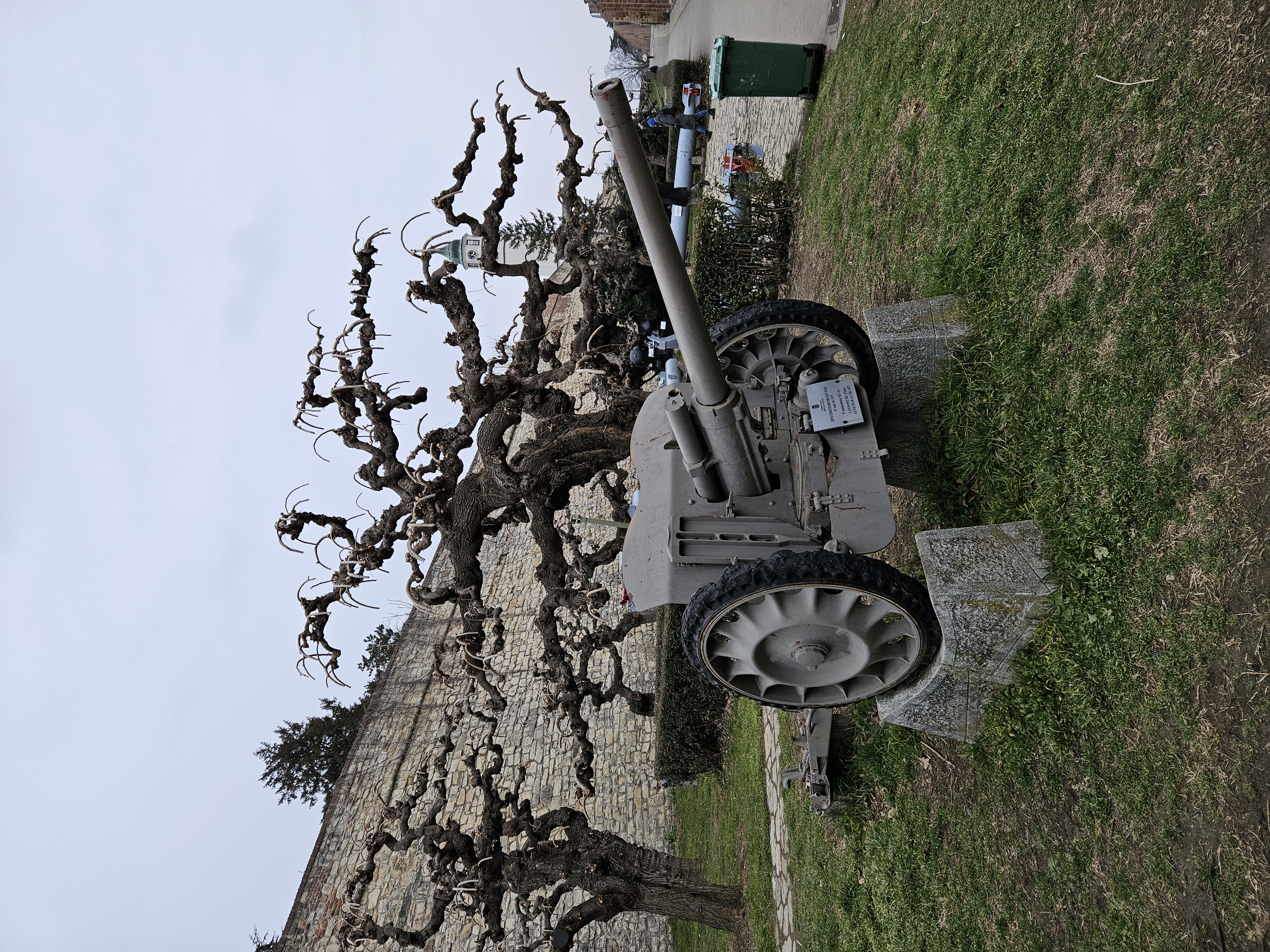
###
Tanks
Each tank in front of Kalemegdan is part of a larger mosaic of Balkan, European and world military history. Some drove towards liberation, some defended the territory, and some remained trapped in the middle of political fractures that needed the world.
#### Which tanks are exposed?
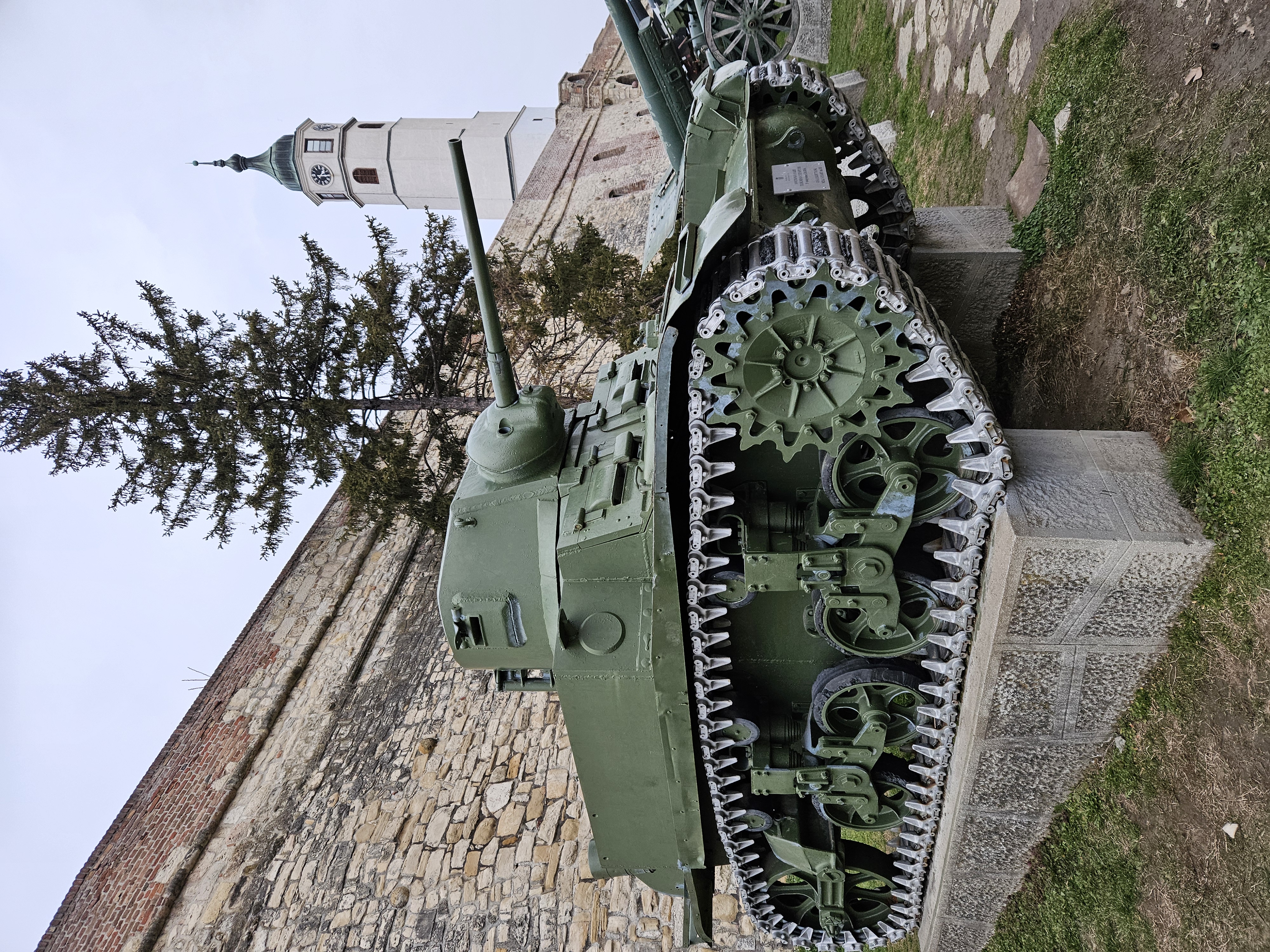
**M3 Stuart**
It was used by allies, including partisan forces under the auspices of the Allied Support. Although weaker armor, it was fast and often used for the reconnaissance and support of infantry. Many forget that such tanks have played key roles, not by force, but tactics.
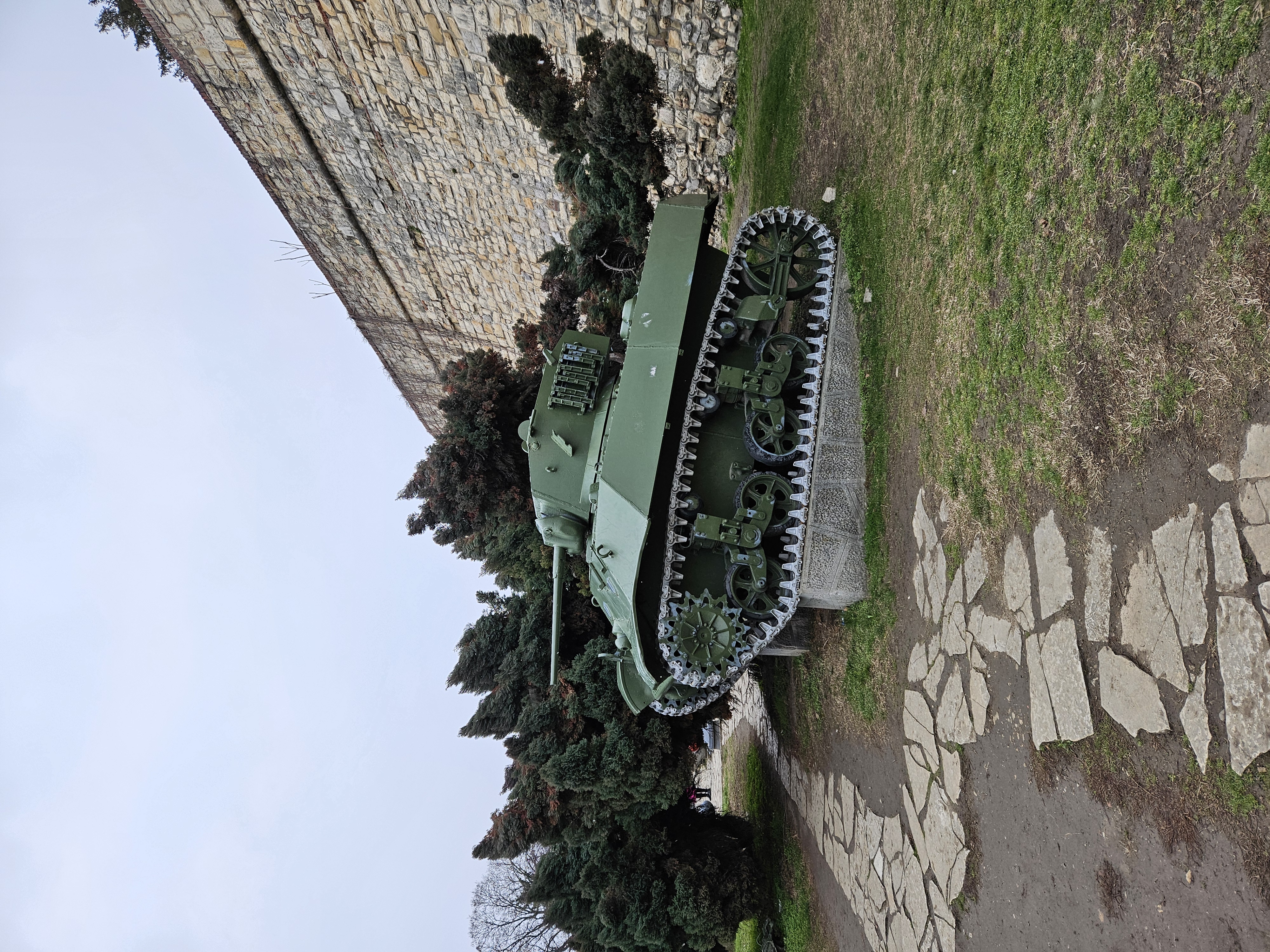
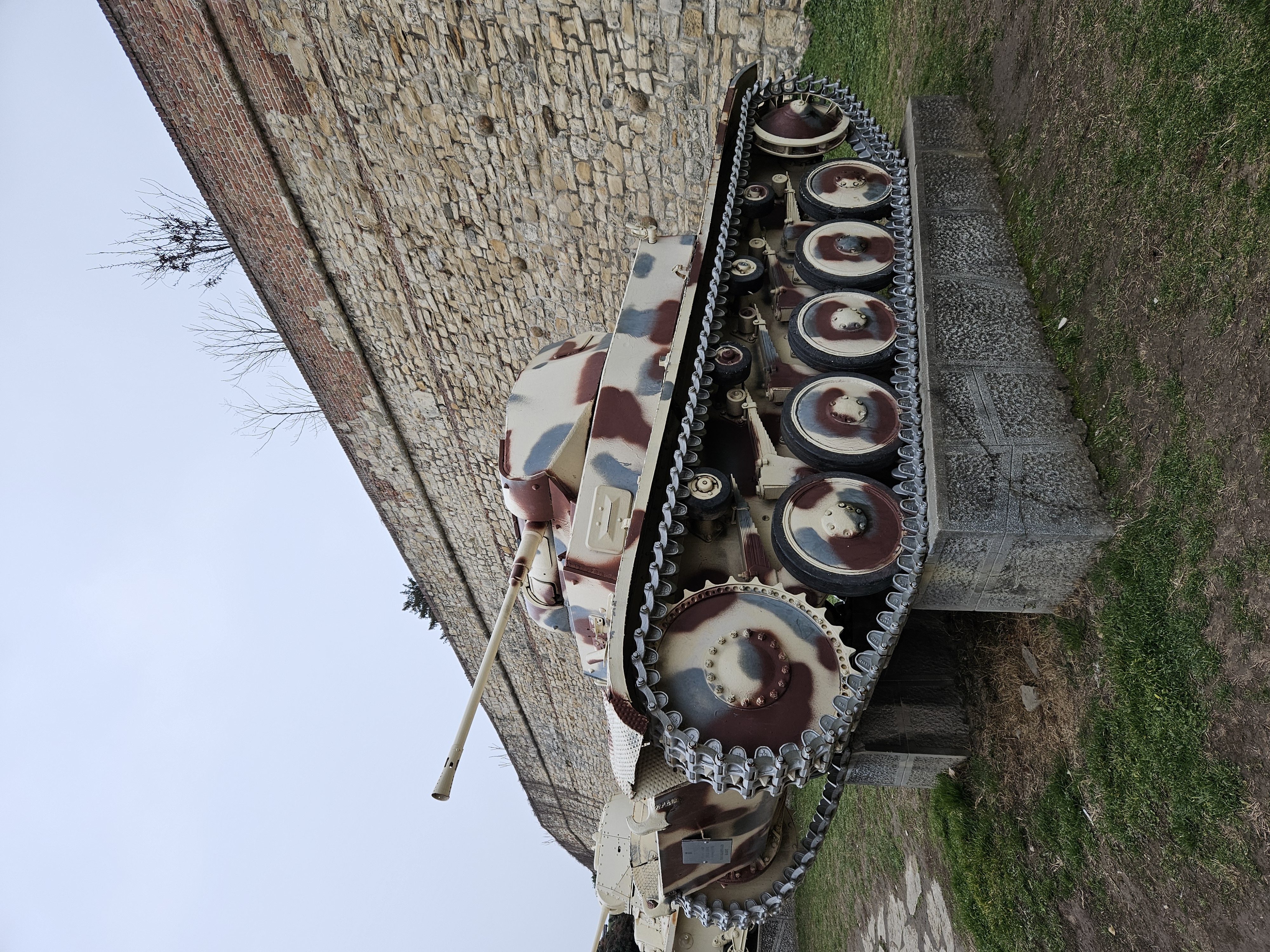
**Panzer II**
The Panzer II, on display in front of Kalemegdan, may not appear as imposing as other tanks, but its historical significance is enormous. Produced in Germany in 1935, this light tank with a 20 mm gun was the first serious armored asset of the Nazi army in the early stages of WW2.
It was used in the invasions of Poland, France and the USSR, most often as a reconnaissance or support tank. With weak armor and weapons, the Panzer II could not cope with heavier tanks, but it laid the foundations of German tank doctrine and gave room for the development of stronger models like the Panzer III and IV.
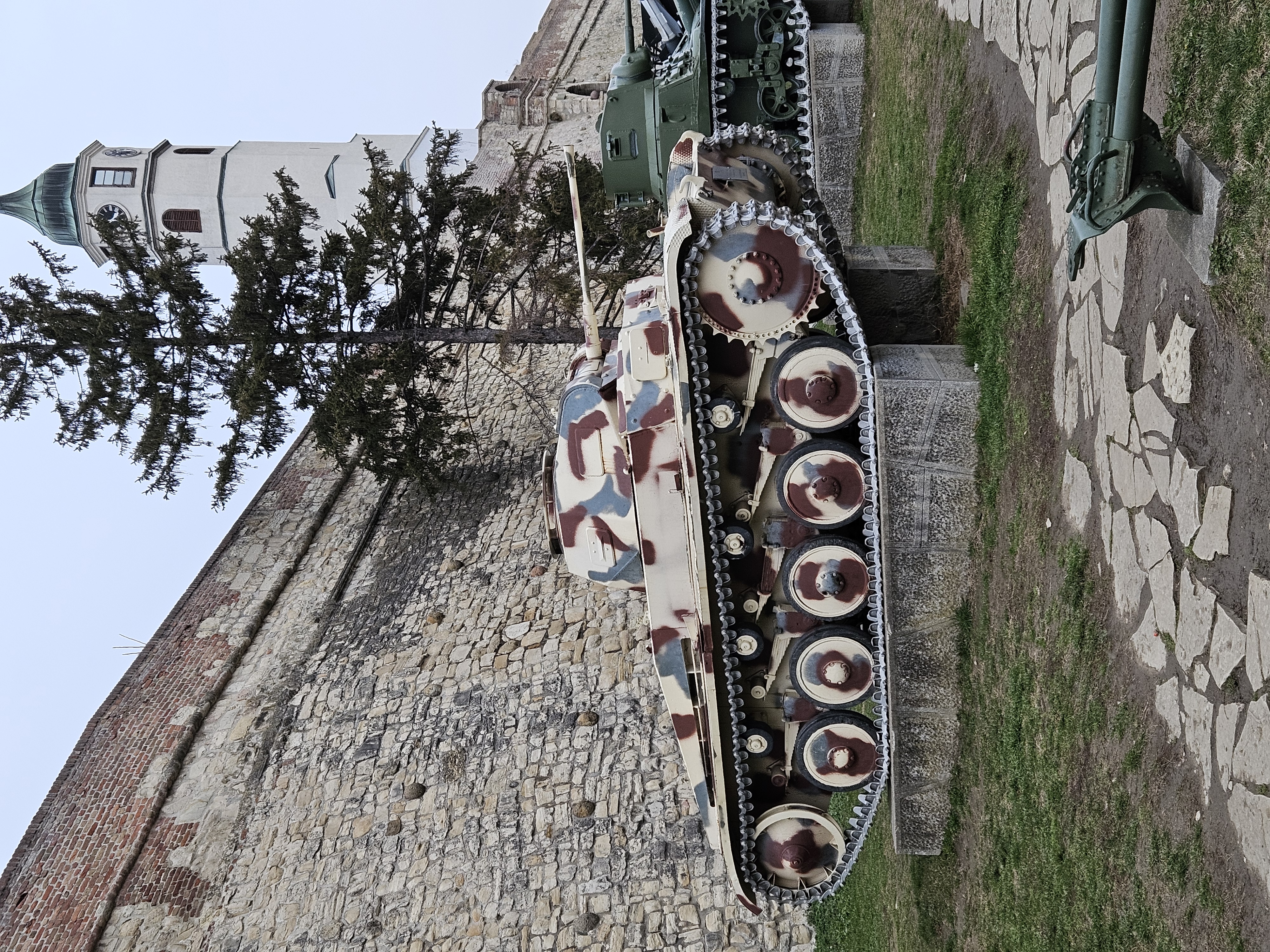
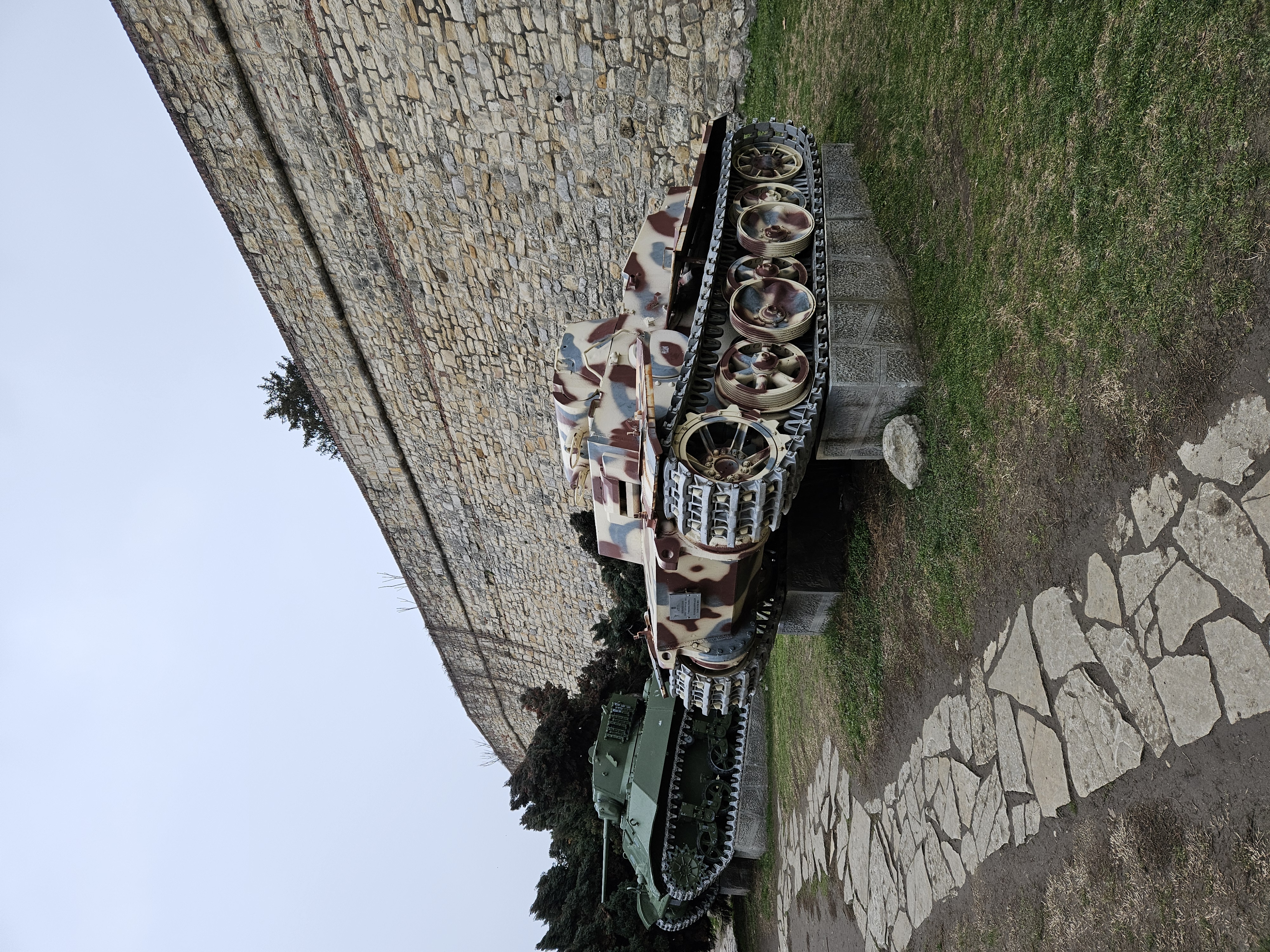
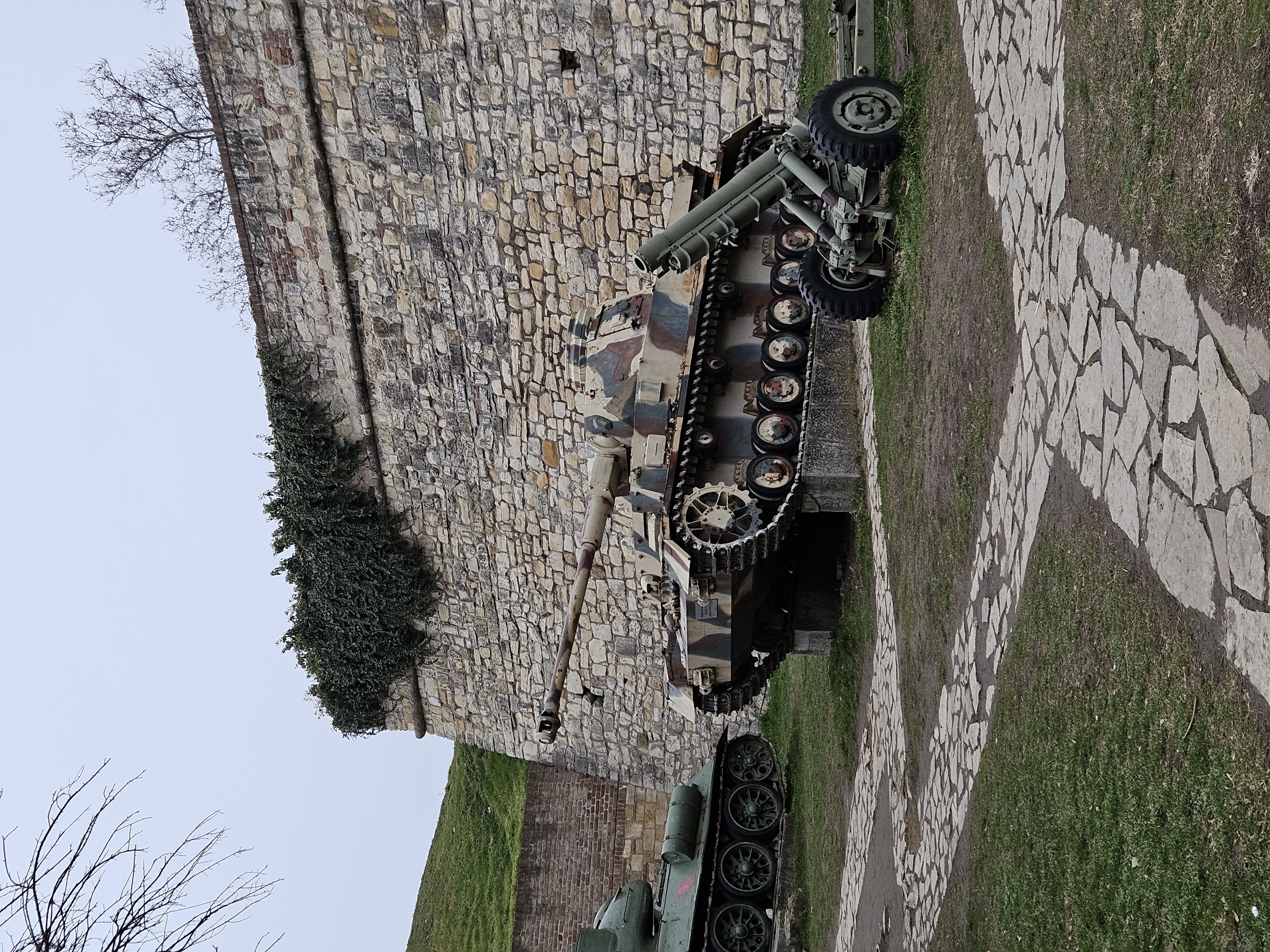
**Panzer IV**
The Panzer IV, displayed in front of Kalemegdan, was the most important and longest-lived tank of Nazi Germany. In service from 1939 until the end of the war, this medium tank underwent countless modifications, and its version with a long 75 mm gun became the main opponent of Allied and Soviet tanks.
Unlike the experimental models, the Panzer IV was reliable, mass-produced and deployed on all fronts, including in the Balkans, where it was used by German troops and later by partisans as confiscated equipment.
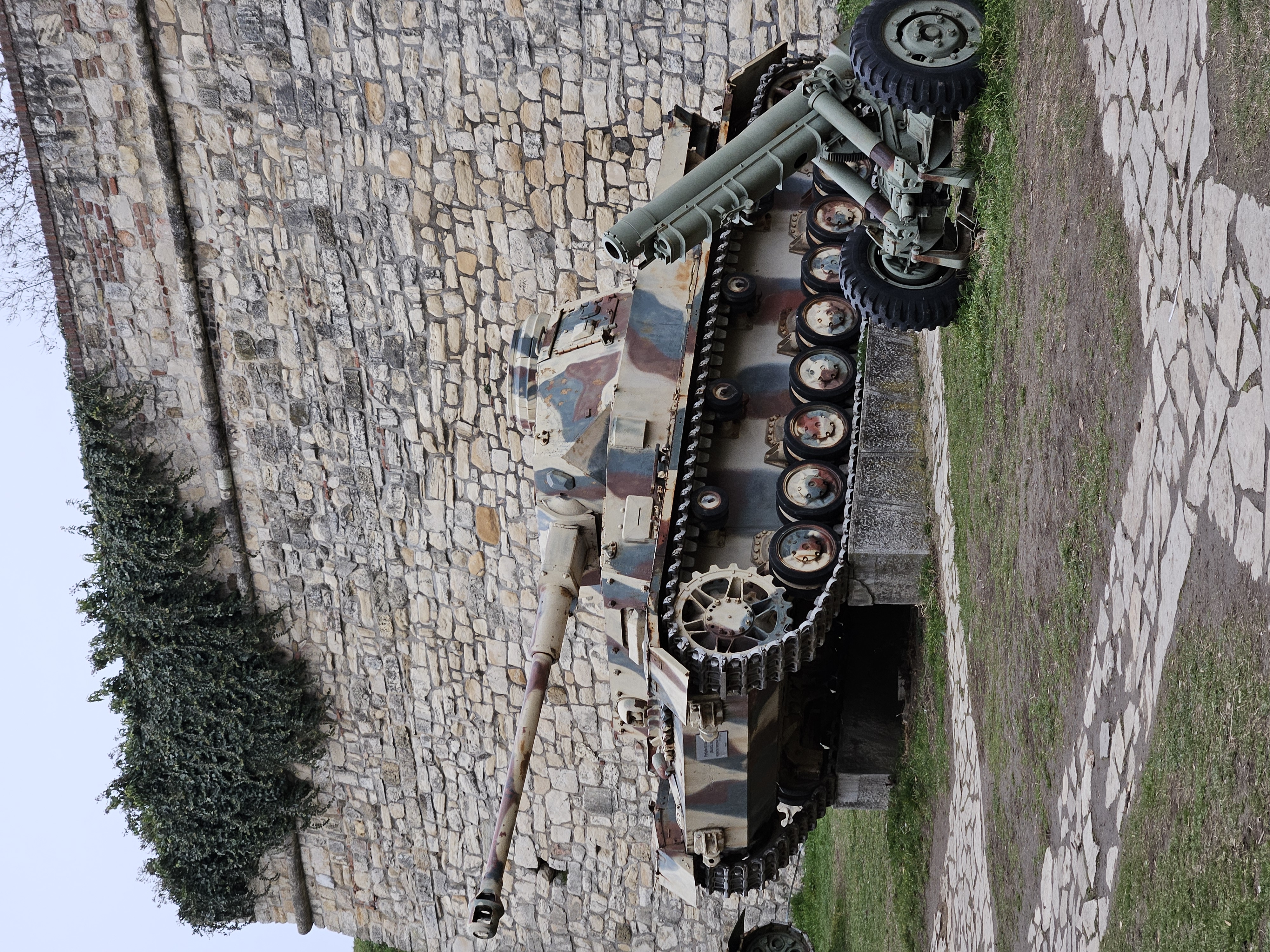


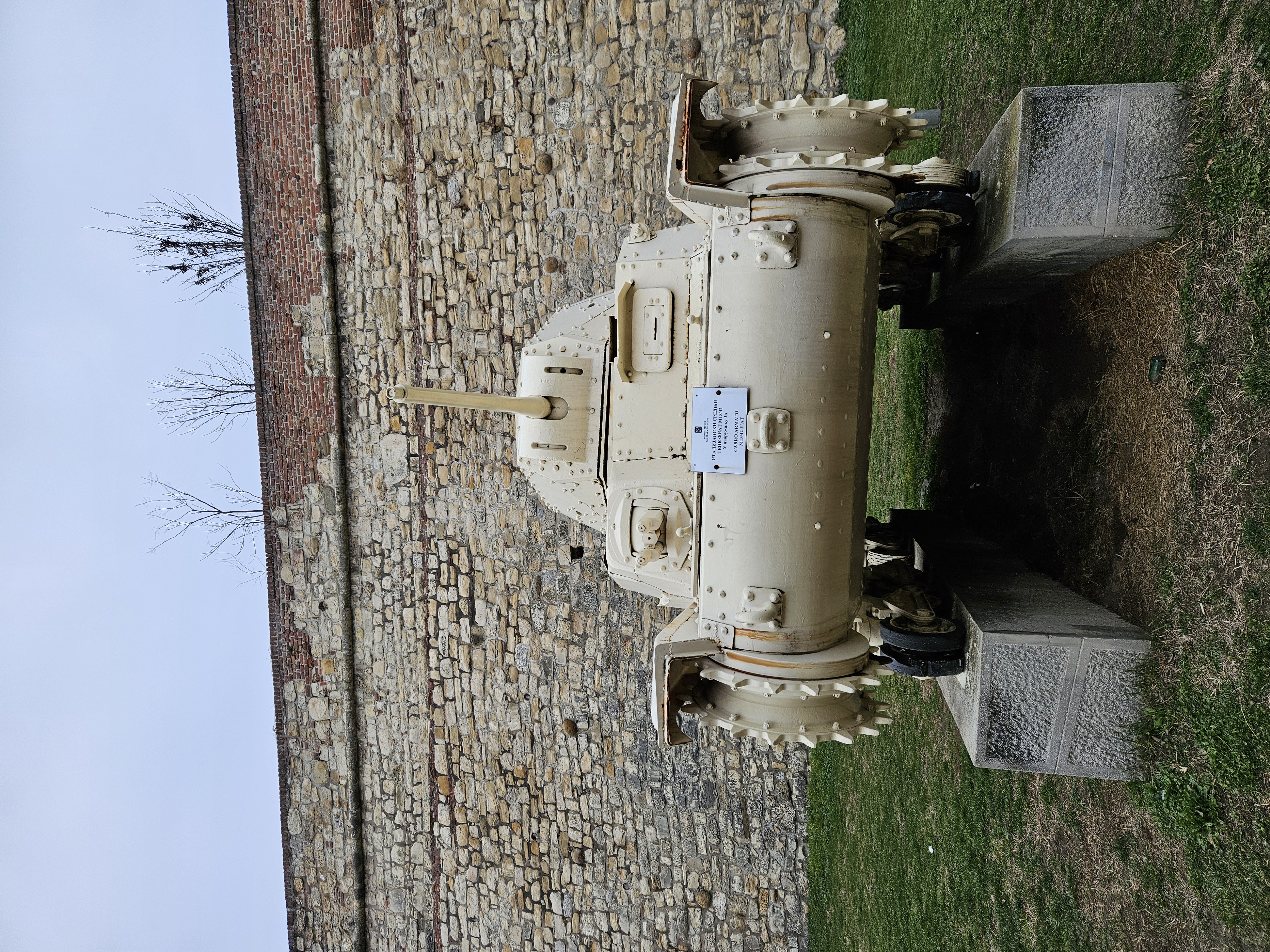
**M13/40**
The M13/40, an Italian medium tank on display outside Kalemegdan, was Italy's main tank in WW2. Armed with a 47 mm gun, with weak armor and poor mechanics, it was mostly used in North Africa and the Balkans.
Although often inferior to Allied tanks, the M13/40 represented an effort by impoverished Italian industry to meet the challenges of modern warfare. The tank in front of the fortress today is a witness to a failed war doctrine, and the fate of the soldiers it left unprotected.
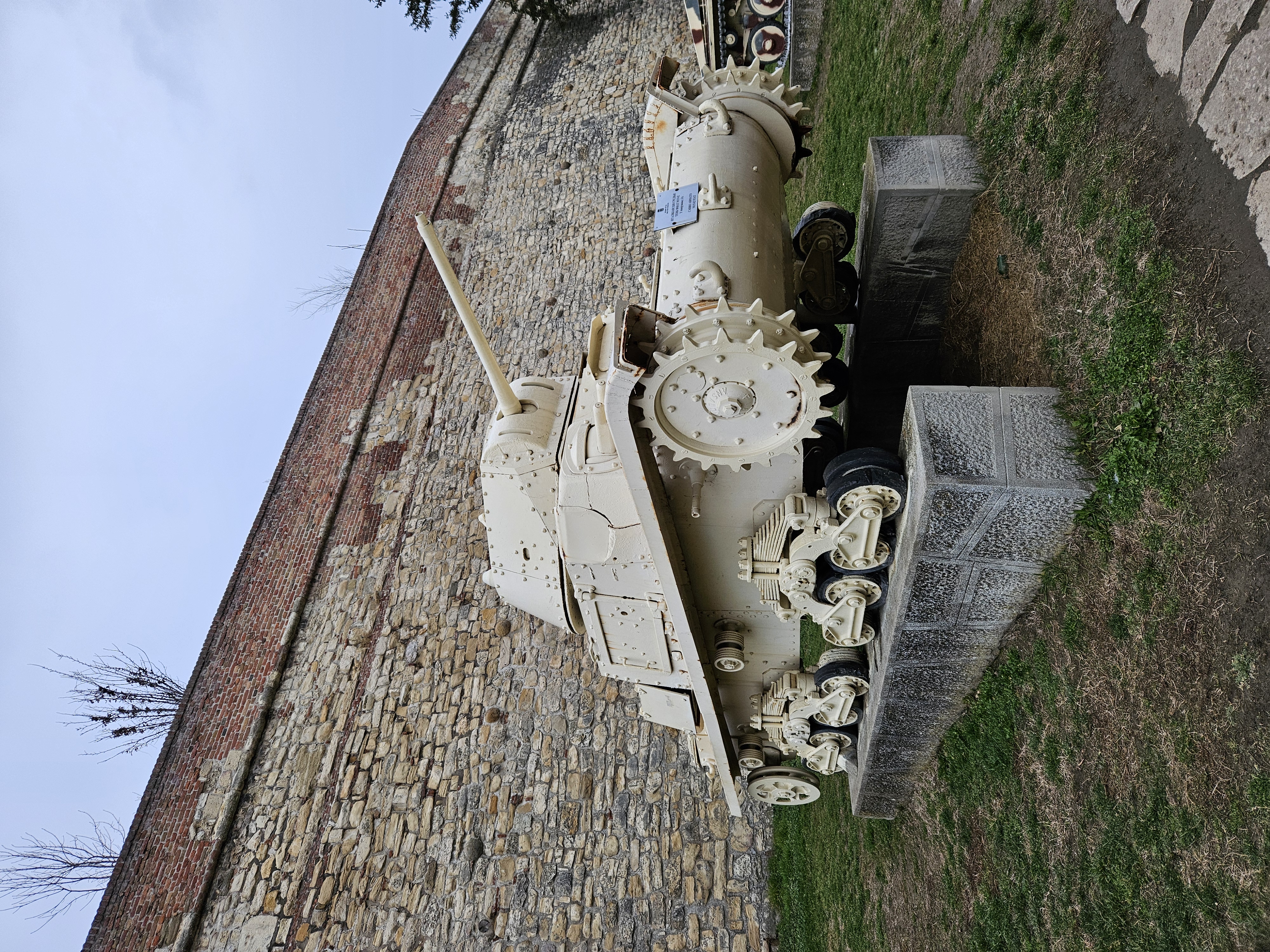
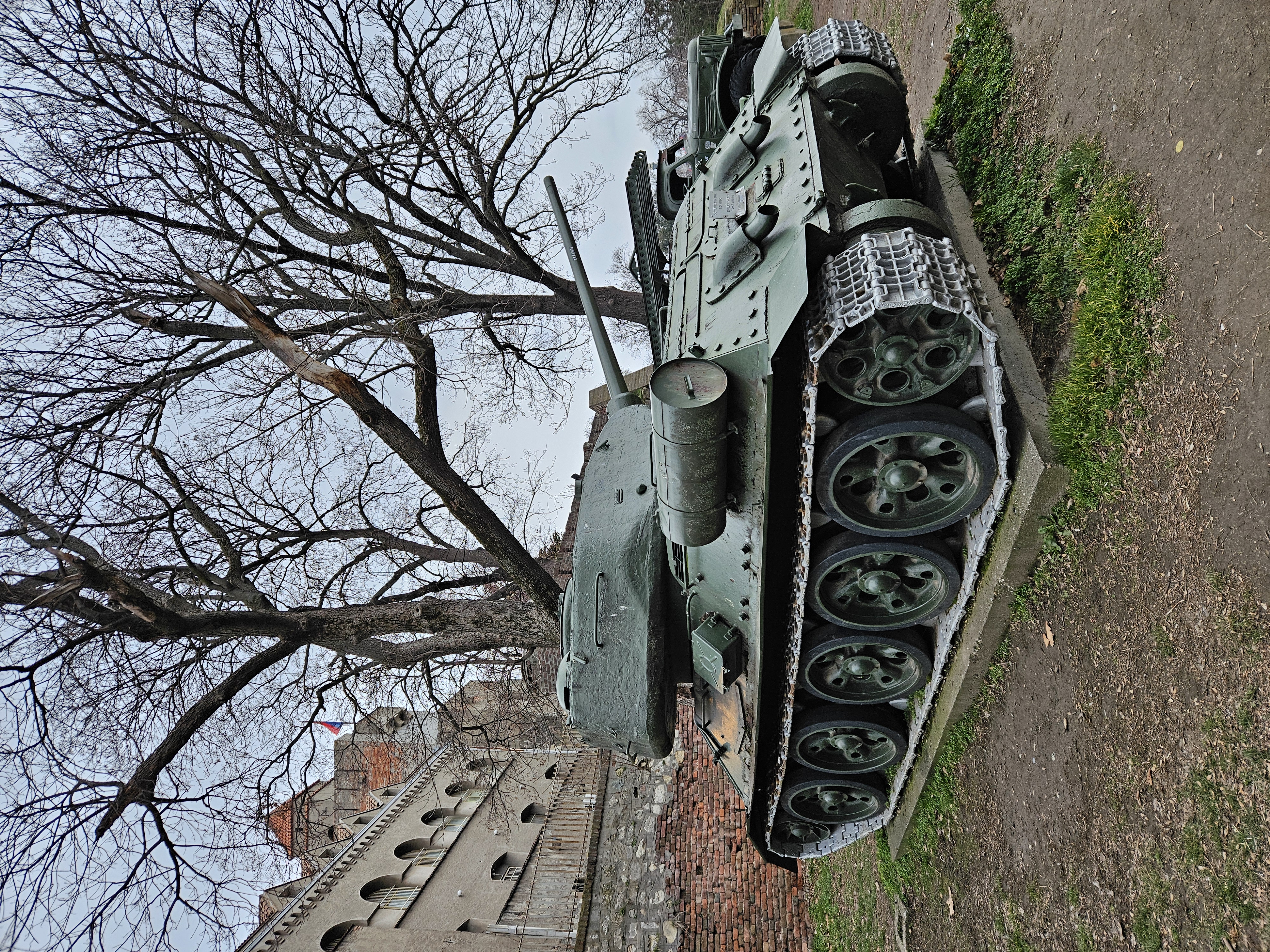
**T-34**
The T-34, displayed in front of Kalemegdan, is not just a tank, it is a symbol of resistance, strength and survival. The Soviet medium tank of 1940, with sloping armor, a 76 mm, later 85 mm gun, was a technical and tactical shock to the Nazis.
The T-34 became the backbone of the Red Army in WW2 and participated in the liberation of Yugoslavia. His combination of mobility, armor and firepower made him almost invincible in his time.
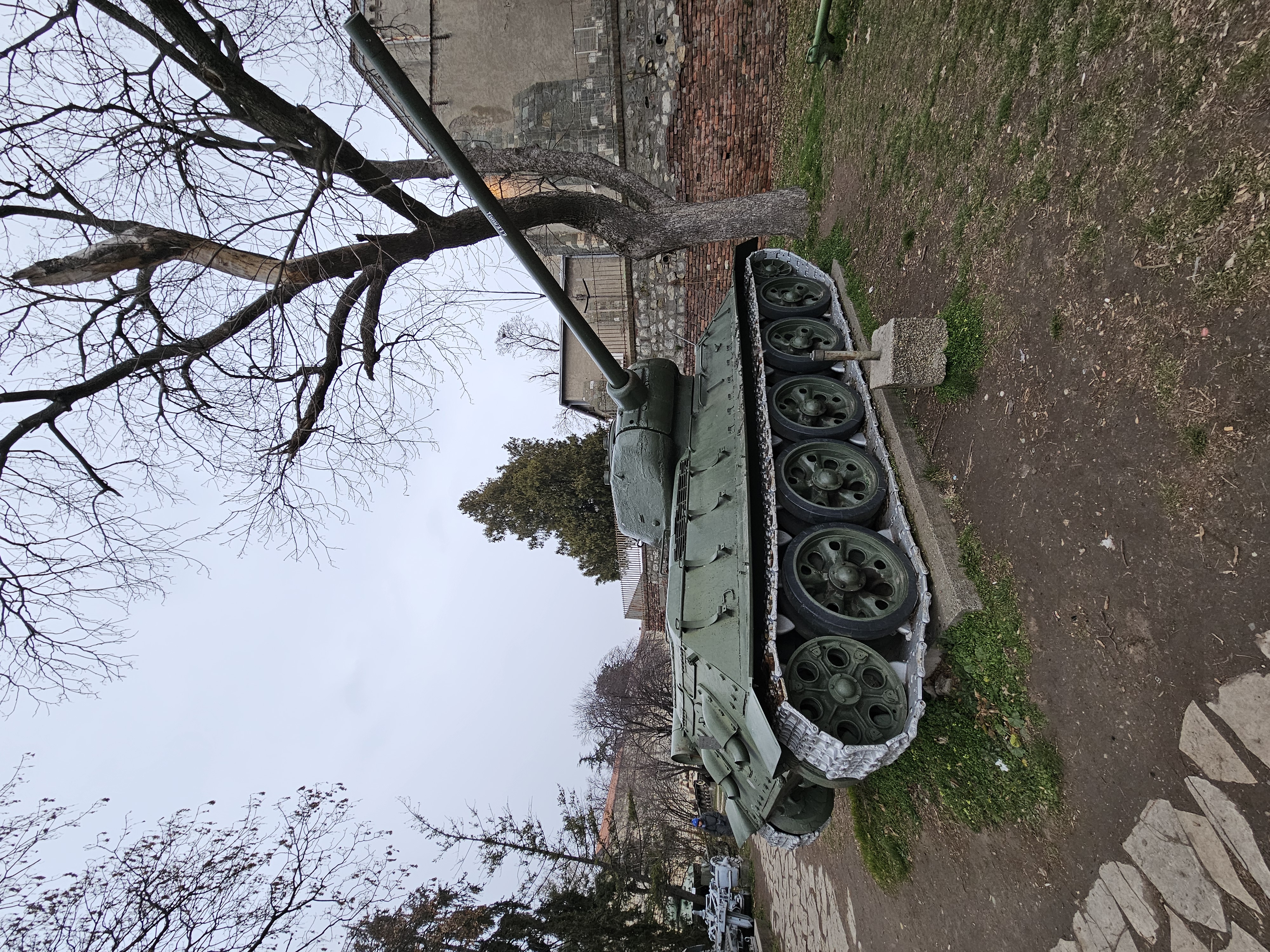
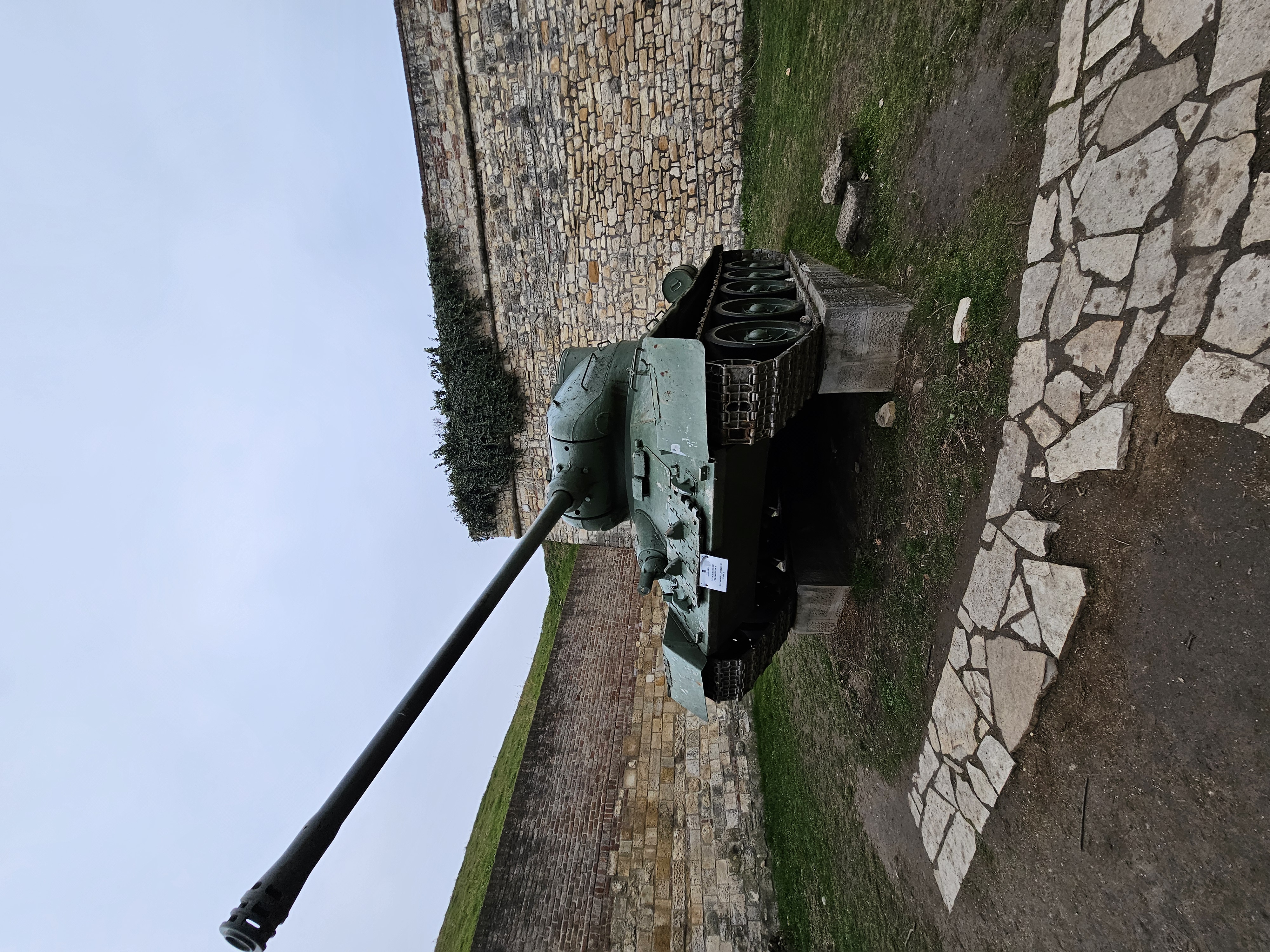
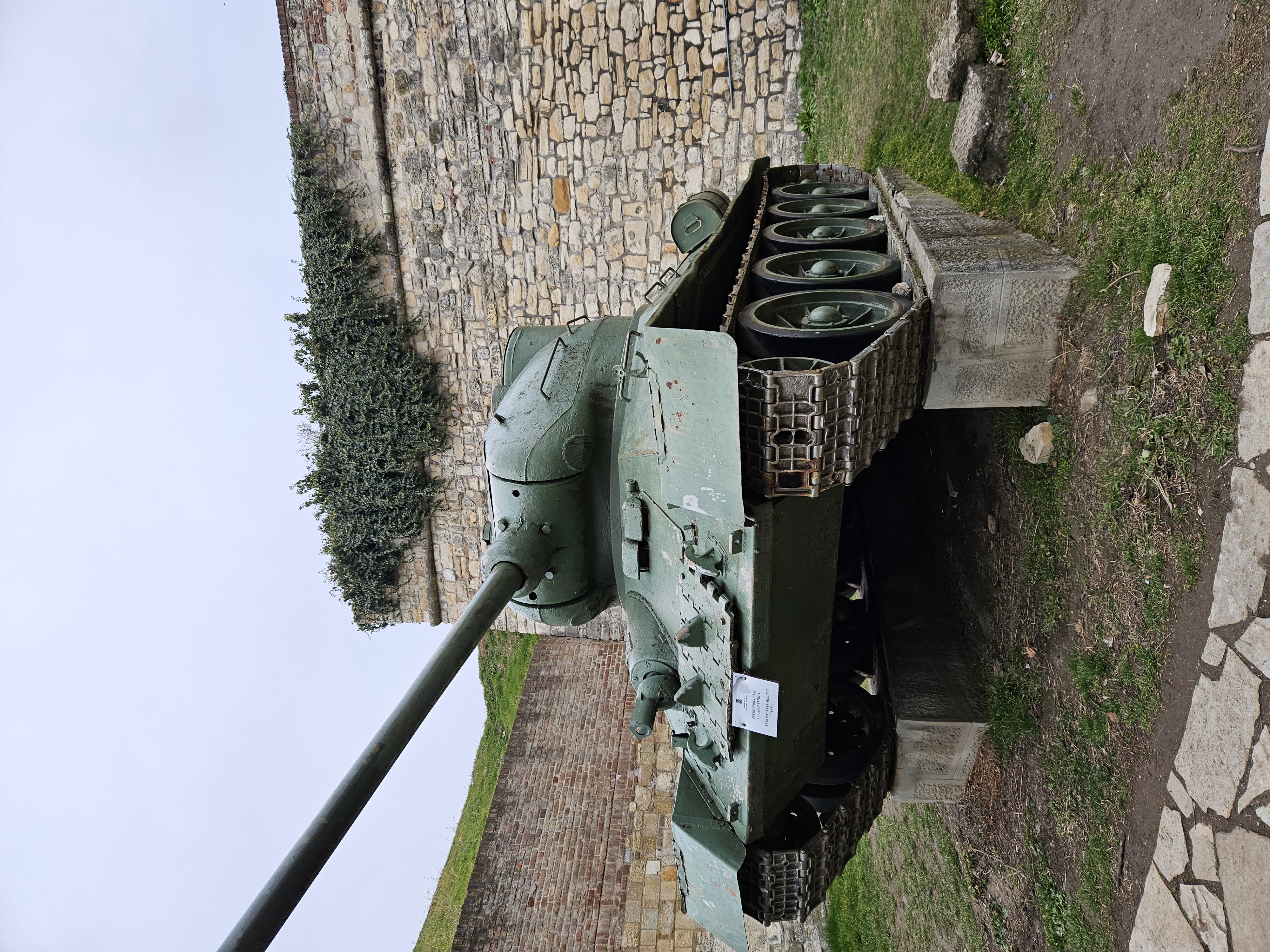

**STUG III**
The Sturmgeschütz III, on display outside Kalemegdan, was a German self-propelled gun, a low, silent machine with a powerful gun. Although not a true tank, it did't have a rotating turret, it was deadly effective in the anti-tank and assault role.
Armed with a 75 mm gun, the Stug III was cheaper and easier to manufacture than standard tanks. It was used on all fronts, including the Balkans, where it was remembered as an ambush enemy, often invisible until it was too late.
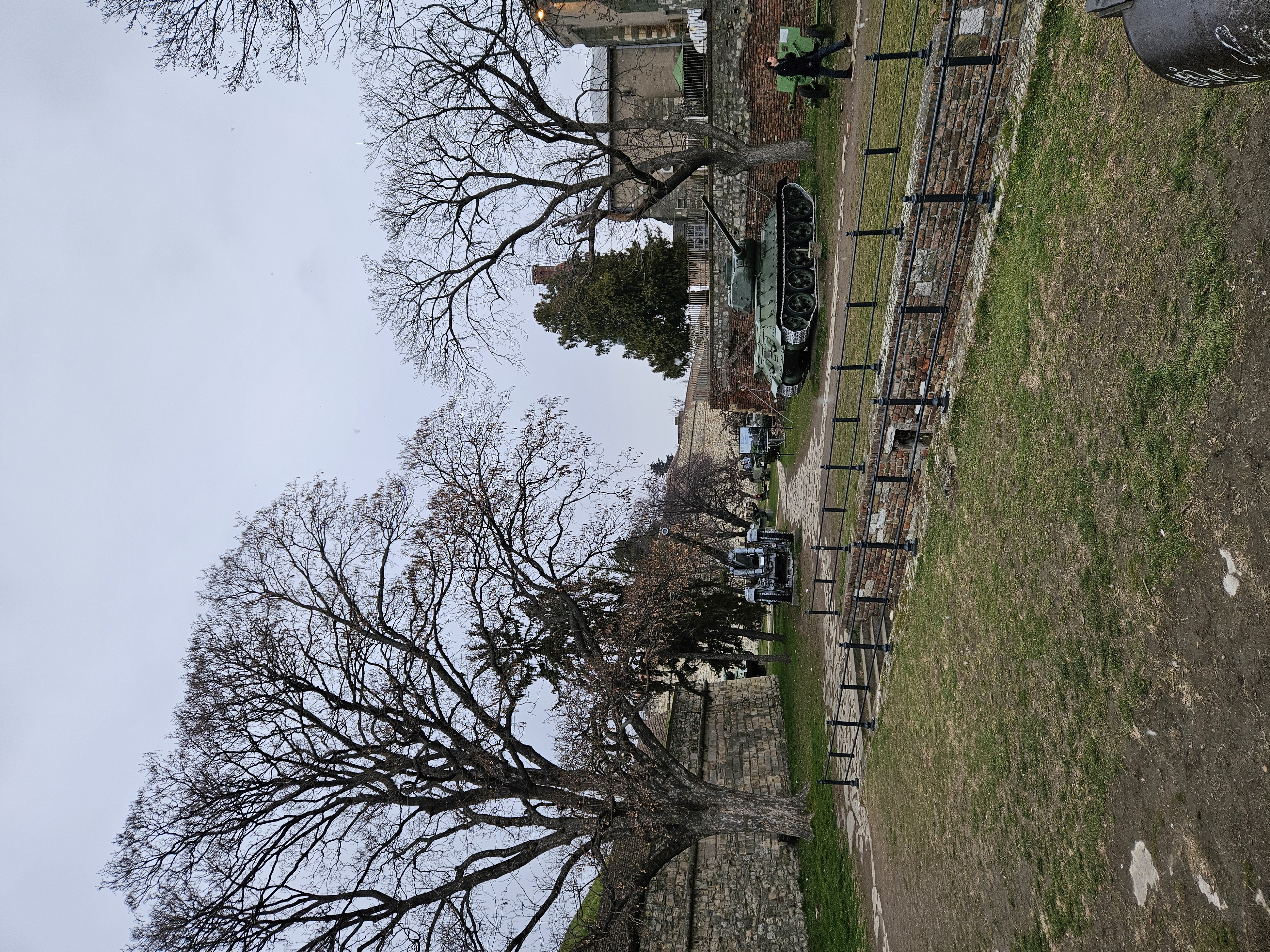

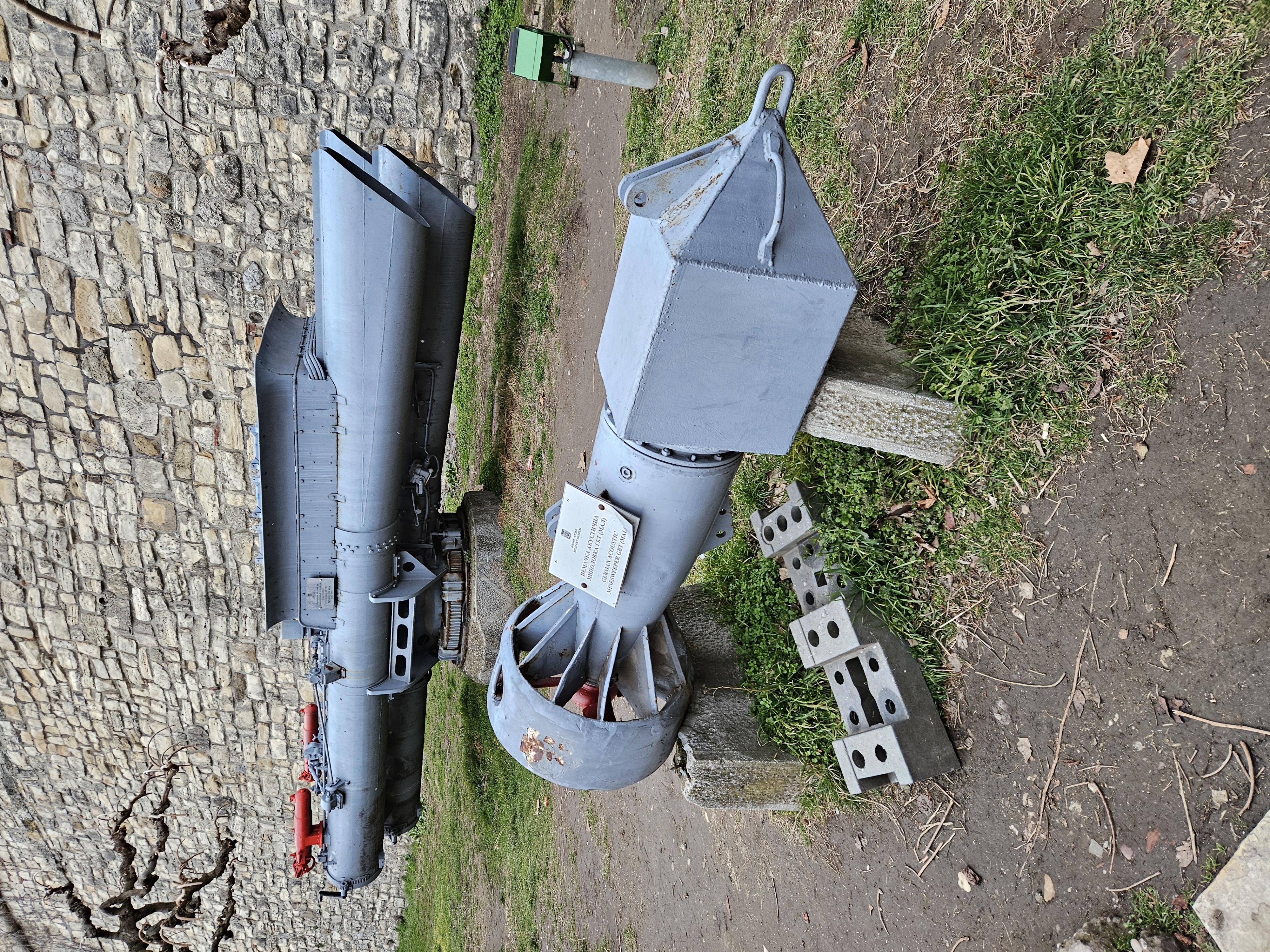
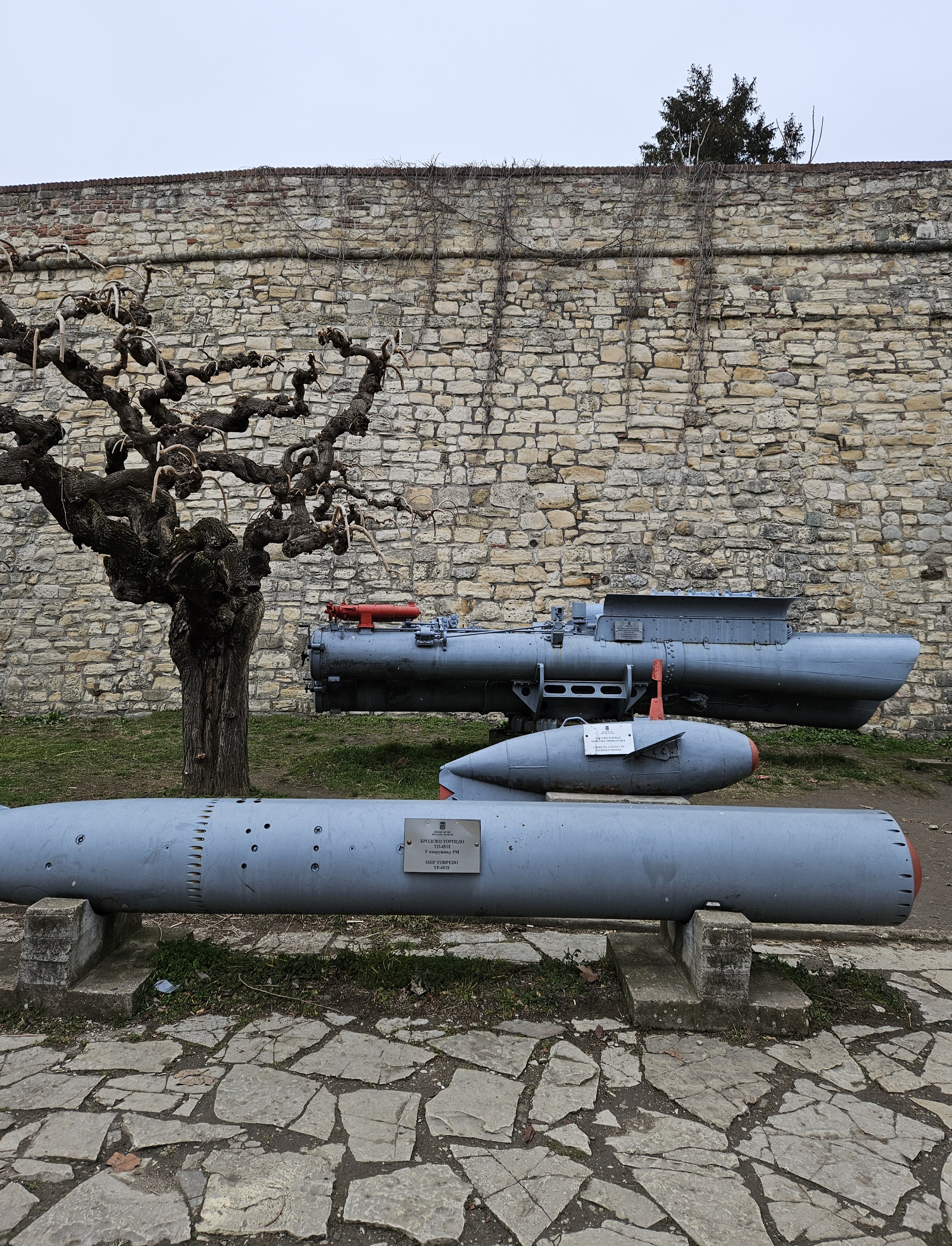

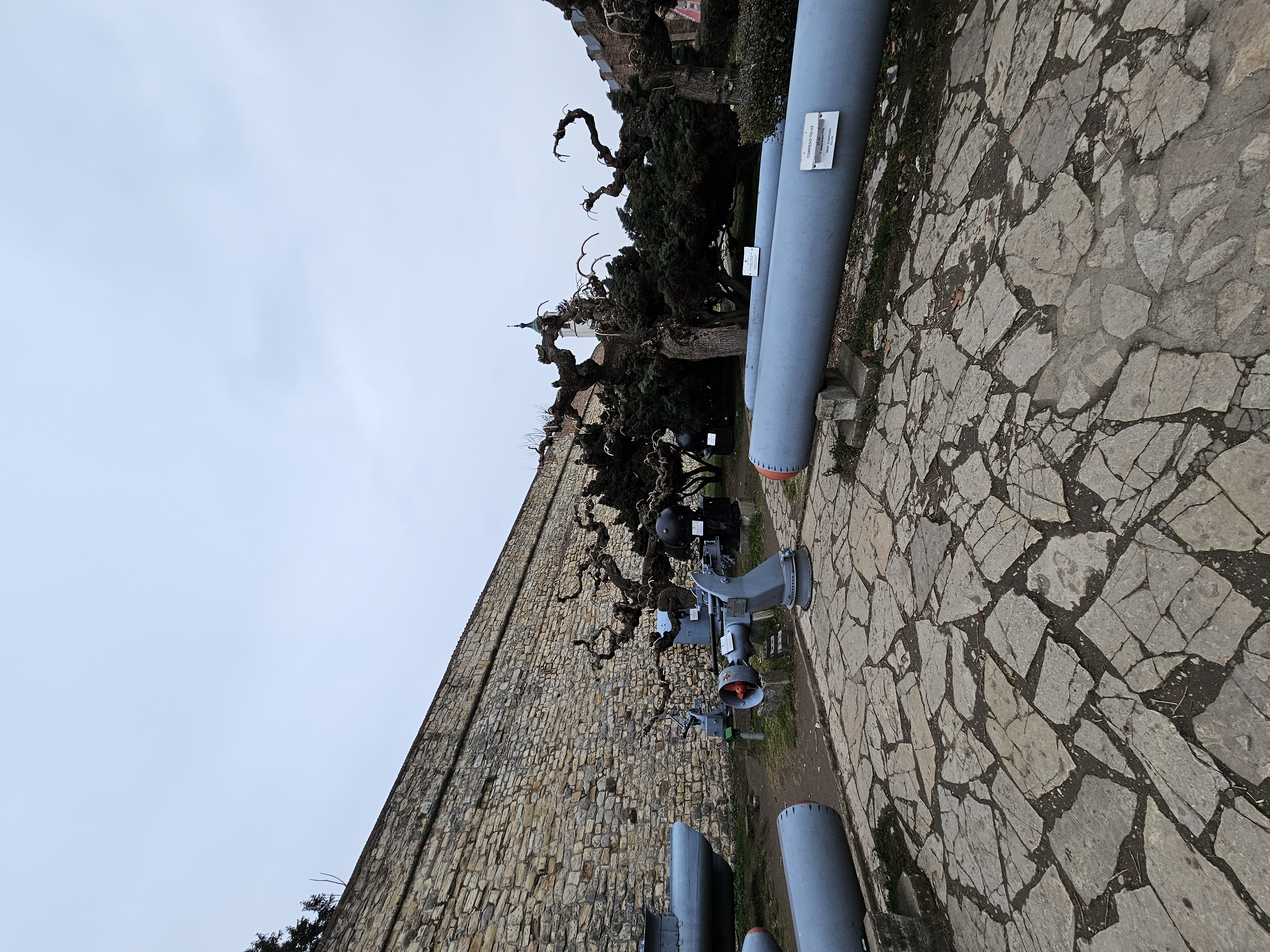
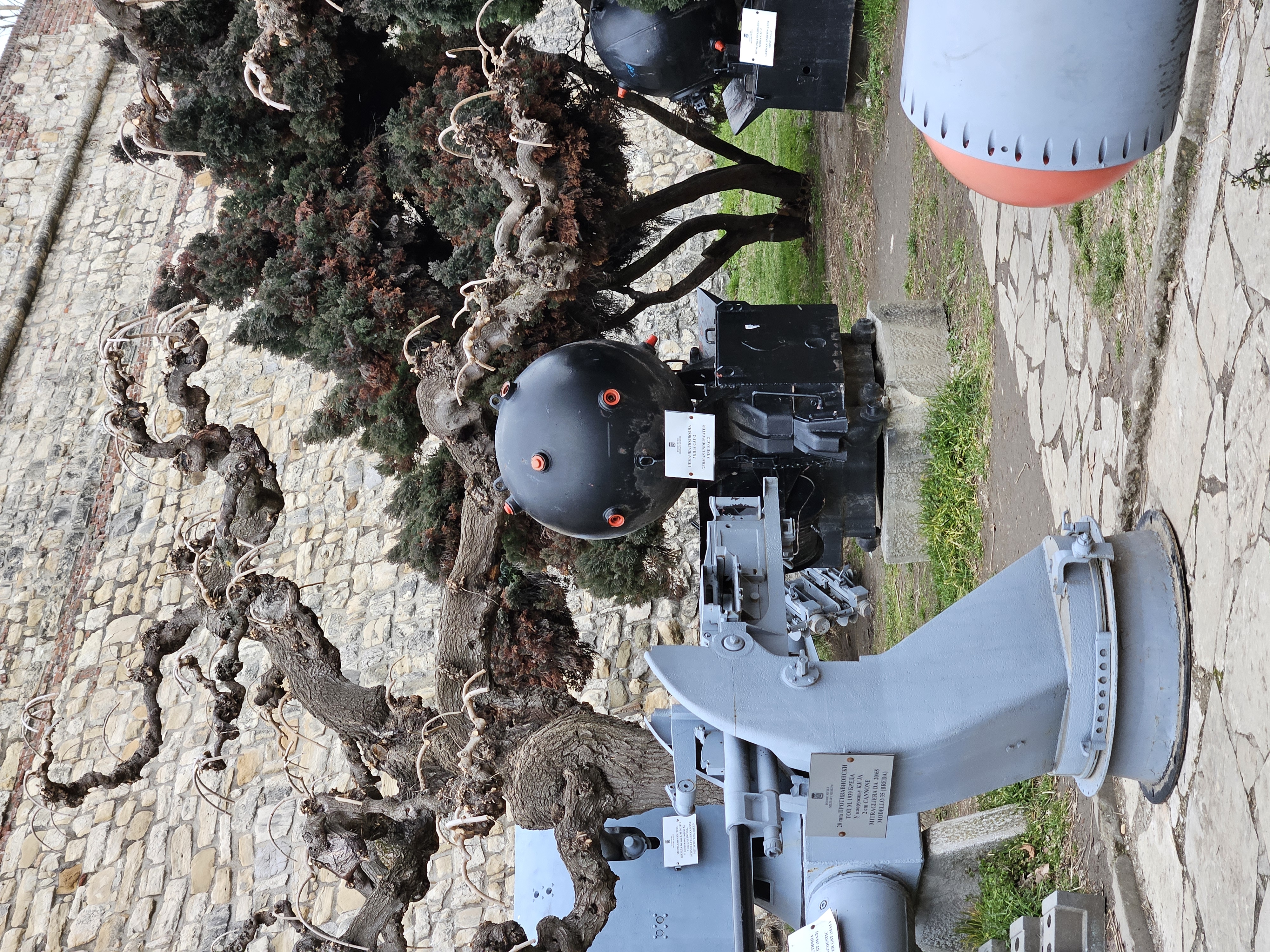
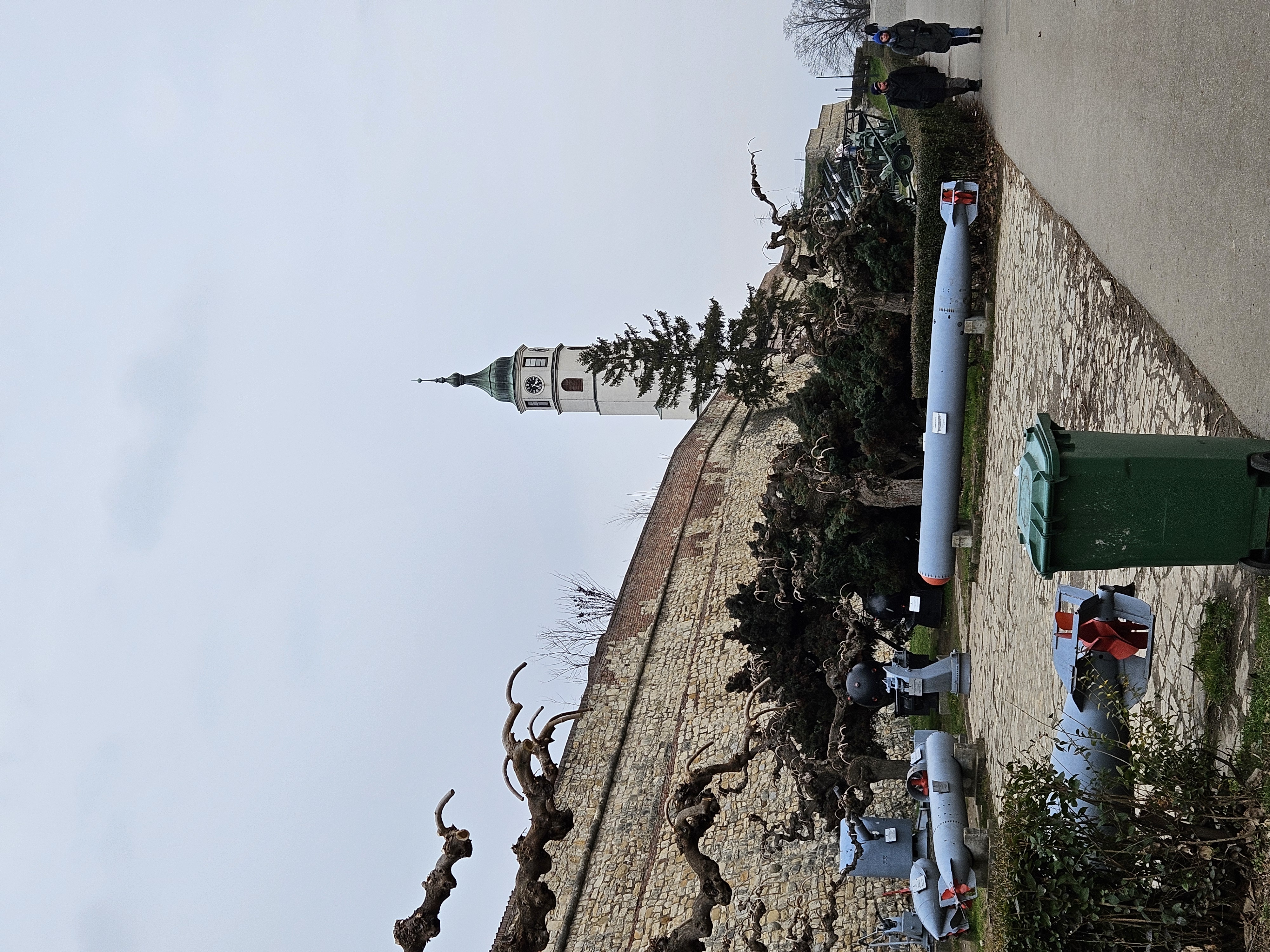
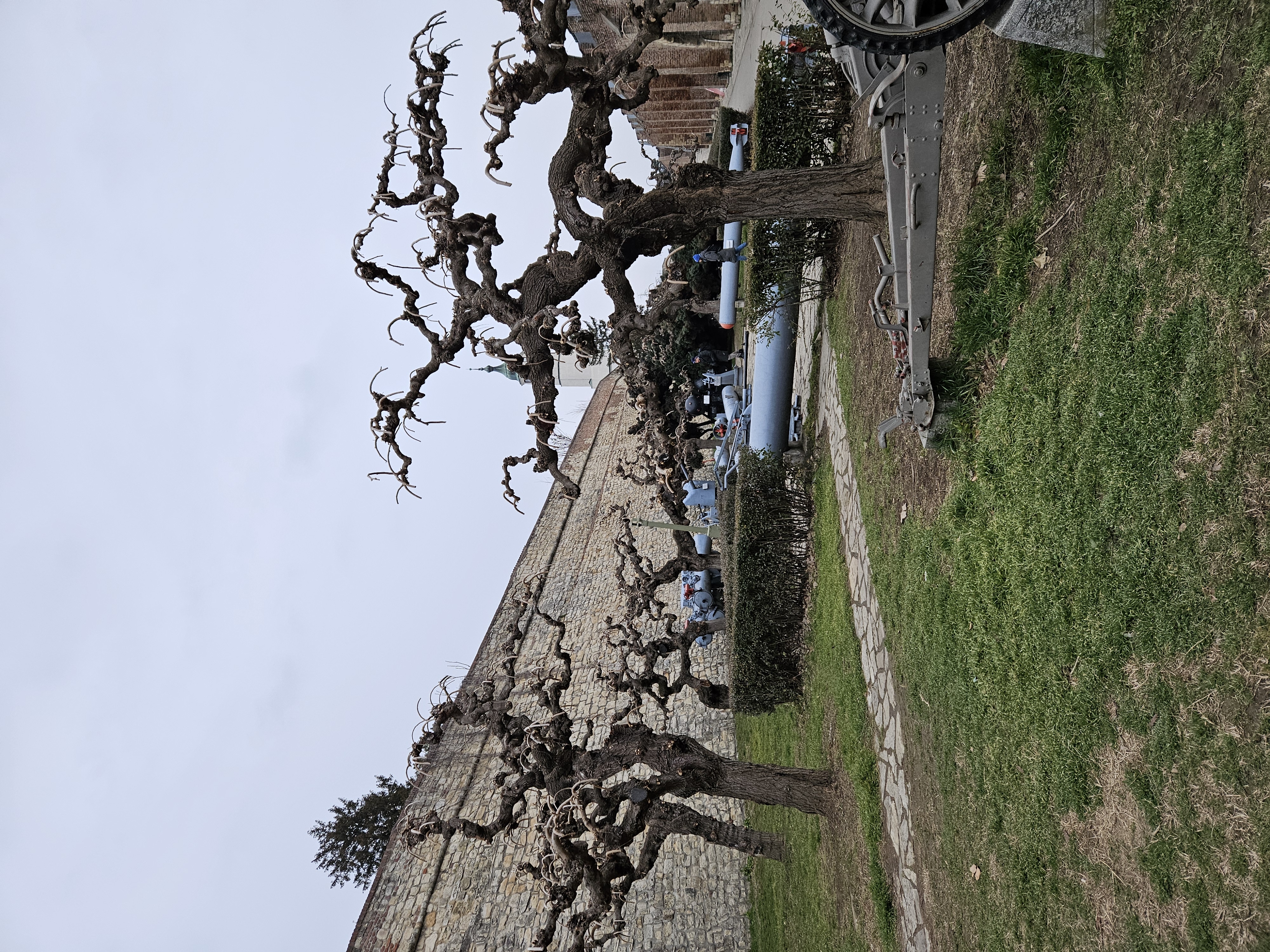
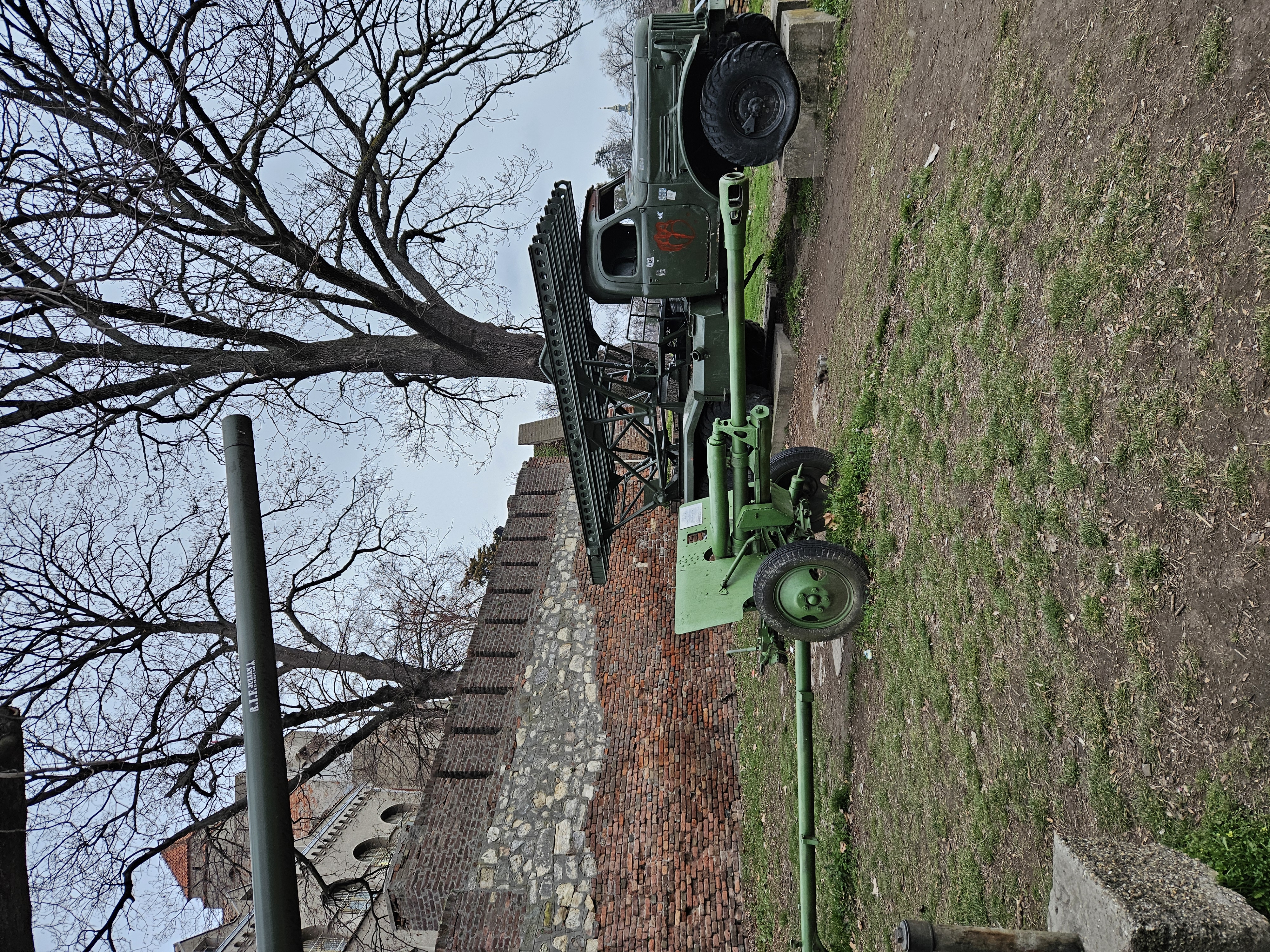
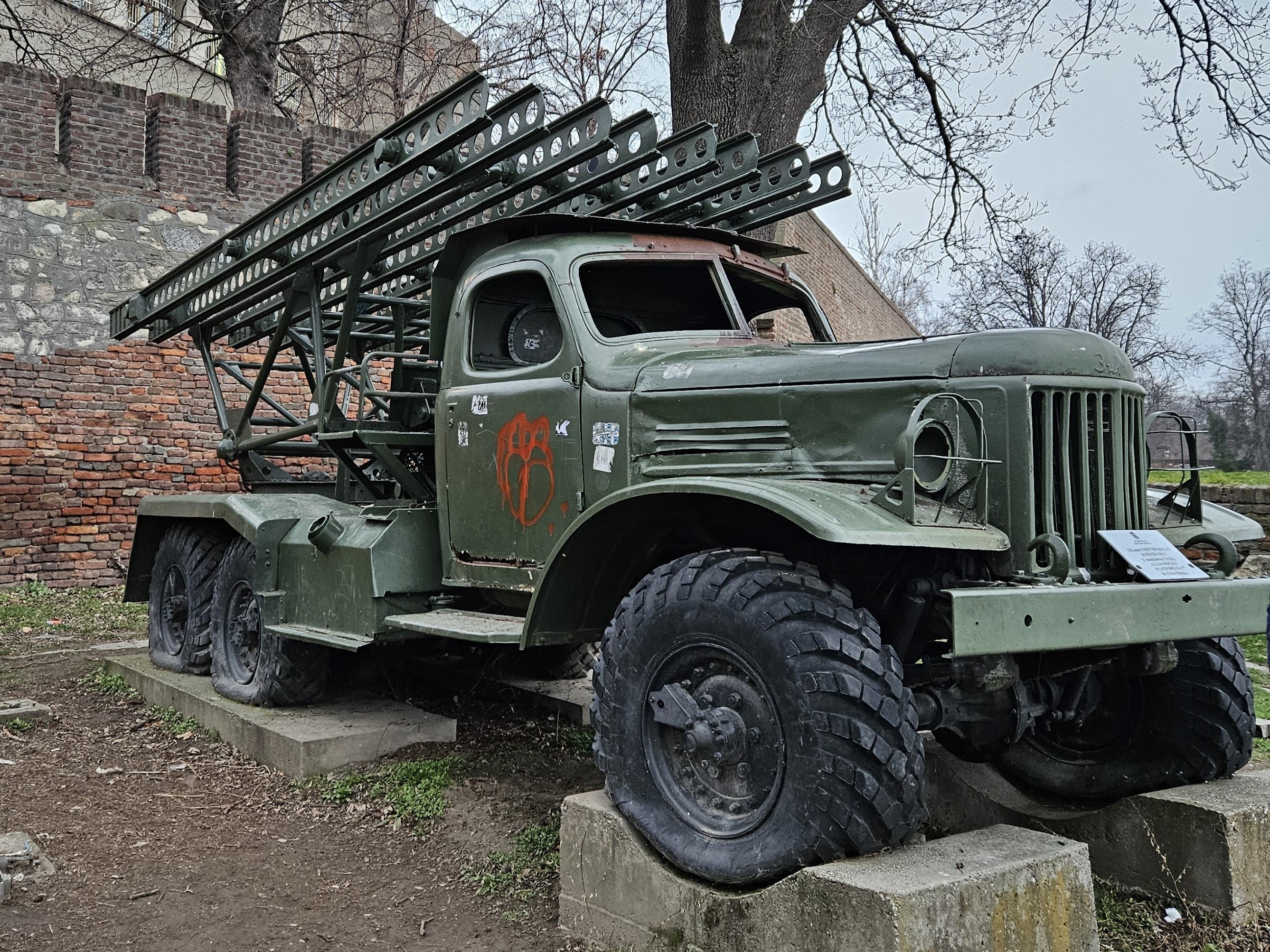
As we pass by rockets, tanks, cannons and tools in front of the Kalemegdan Fortress, it is easy to observe them as a mere exhibition of iron, weapons, historical remains. But they are far more than that. Each piece of metal, every caterpillar, pipe or dome, the story is about people, about history, about ideas that shaped the fate of this city, this country and the whole continent.
Kalemegdan is not just a park, neither the fortress. It is a place of layered memory. Here, the empires are touched, the wars crossed, and this time exposed to war equipment does't fade this past. The S-125 rocket reminds us that and outdated technology in the hands of decisive people can change the course of history. Tanks teach us about the severity of war and lives enclosed in armor. The artillery talks about the more ops and defenses that were fought not only by cannons, but also faith in freedom.
This exhibition is not just a weapon collection. It is an open sky museum, in which steel that rusted the story of history. About wars, but also of peace. About destruction, but also survival. About technology, but also a man.
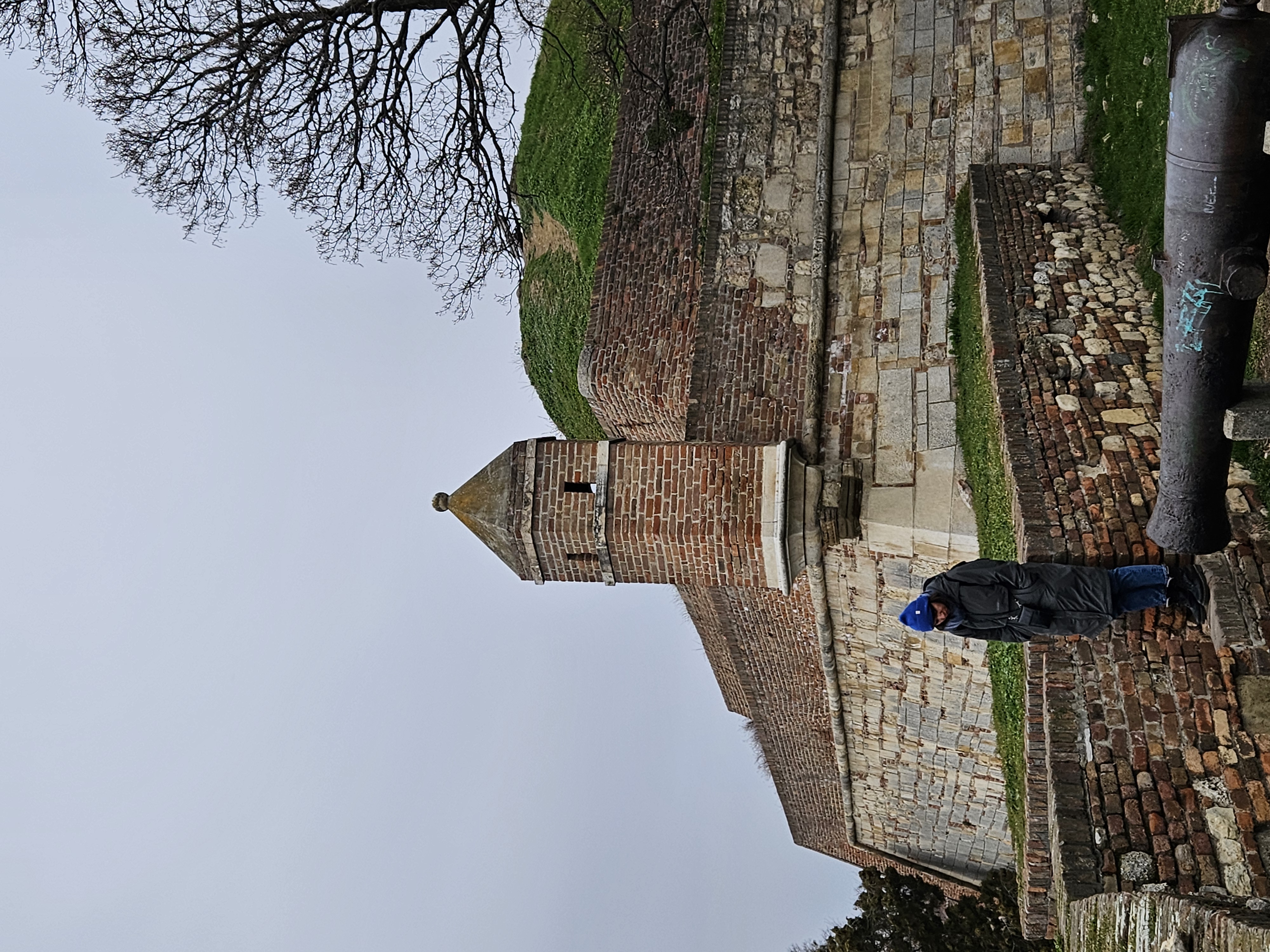
>All photos were taken by me, using the Samsung S23. I found all the information on the internet :D
[SOURCE OF S-125](https://sr.wikipedia.org/wiki/%D0%A1-125_%D0%9D%D0%B5%D0%B2%D0%B0)
[SOURCE OF ARTILLERY](https://www.muzej.mod.gov.rs/lat/230/o-vojnom-muzeju-230)
[SOURCE OF TANKS](http://www.srpskioklop.paluba.info/)

I hope you enjoyed reading and looking at the photos. I enjoyed making this blog, I hope you did too. Until next time, "Regards!"
[//]:# (!pinmapple 44.82276 lat 20.45035 long d3scr)
[//]:# (!worldmappin 44.82309 lat 20.45100 long d3scr)